Are you seeking one-on-one college counseling and/or essay support? Limited spots are now available. Click here to learn more.

54 Most Interesting Technology Research Topics for 2023
May 30, 2023
Scrambling to find technology research topics for the assignment that’s due sooner than you thought? Take a scroll down these 54 interesting technology essay topics in 10 different categories, including controversial technology topics, and some example research questions for each.
Social technology research topics
Whether you have active profiles on every social media platform, you’ve taken a social media break, or you generally try to limit your engagement as much as possible, you probably understand how pervasive social technologies have become in today’s culture. Social technology will especially appeal to those looking for widely discussed, mainstream technology essay topics.
- How do viewers respond to virtual influencers vs human influencers? Is one more effective or ethical over the other?
- Across social media platforms, when and where is mob mentality most prevalent? How do the nuances of mob mentality shift depending on the platform or topic?
- Portable devices like cell phones, laptops, and tablets have certainly made daily life easier in some ways. But how have they made daily life more difficult?
- How does access to social media affect developing brains? And what about mature brains?
- Can dating apps alter how users perceive and interact with people in real life?
- Studies have proven “doomscrolling” to negatively impact mental health—could there ever be any positive impacts?
Cryptocurrency and blockchain technology research topics
Following cryptocurrency and blockchain technology has been a rollercoaster the last few years. And since Bitcoin’s conception in 2009, cryptocurrency has consistently showed up on many lists of controversial technology topics.
- Is it ethical for celebrities or influential people to promote cryptocurrencies or cryptographic assets like NFTs ?
- What are the environmental impacts of mining cryptocurrencies? Could those impacts ever change?
- How does cryptocurrency impact financial security and financial health?
- Could the privacy cryptocurrency offers ever be worth the added security risks?
- How might cryptocurrency regulations and impacts continue to evolve?
- Created to enable cryptocurrency, blockchain has since proven useful in several other industries. What new uses could blockchain have?
Artificial intelligence technology research topics
We started 2023 with M3GAN’s box office success, and now we’re fascinated (or horrified) with ChatGPT , voice cloning , and deepfakes . While people have discussed artificial intelligence for ages, recent advances have really pushed this topic to the front of our minds. Those searching for controversial technology topics should pay close attention to this one.
- OpenAI –the company behind ChatGPT–has shown commitment to safe, moderated AI tools that they hope will provide positive benefits to society. Sam Altman, their CEO, recently testified before a US Senate He described what AI makes possible and called for more regulation in the industry. But even with companies like OpenAI displaying efforts to produce safe AI and advocating for regulations, can AI ever have a purely positive impact? Are certain pitfalls unavoidable?
- In a similar vein, can AI ever actually be ethically or safely produced? Will there always be certain risks?
- How might AI tools impact society across future generations?
- Countless movies and television shows explore the idea of AI going wrong, going back all the way to 1927’s Metropolis . What has a greater impact on public perception—representations in media or industry developments? And can public perception impact industry developments and their effectiveness?
Beauty and anti-aging technology
Throughout human history, people in many cultures have gone to extreme lengths to capture and maintain a youthful beauty. But technology has taken the pursuit of beauty and youth to another level. For those seeking technology essay topics that are both timely and timeless, this one’s a gold mine.
- With augmented reality technology, companies like Perfect allow app users to virtually try on makeup, hair color, hair accessories, and hand or wrist accessories. Could virtual try-ons lead to a somewhat less wasteful beauty industry? What downsides should we consider?
- Users of the Perfect app can also receive virtual diagnoses for skin care issues and virtually “beautify” themselves with smoothed skin, erased blemishes, whitened teeth, brightened under-eye circles, and reshaped facial structures. How could advancements in beauty and anti-aging technology affect self-perception and mental health?
- What are the best alternatives to animal testing within the beauty and anti-aging industry?
- Is anti-aging purely a cosmetic pursuit? Could anti-aging technology provide other benefits?
- Could people actually find a “cure” to aging? And could a cure to aging lead to longer lifespans?
- How might longer human lifespans affect the Earth?
Geoengineering technology research topics
An umbrella term, geoengineering refers to large-scale technologies that can alter the earth and its climate. Typically, these types of technologies aim to combat climate change. Those searching for controversial technology topics should consider looking into this one.
- What benefits can solar geoengineering provide? Can they outweigh the severe risks?
- Compare solar geoengineering methods like mirrors in space, stratospheric aerosol injection, marine cloud brightening, and other proposed methods. How have these methods evolved? How might they continue to evolve?
- Which direct air capture methods are most sustainable?
- How can technology contribute to reforestation efforts?
- What are the best uses for biochar? And how can biochar help or harm the earth?
- Out of all the carbon geoengineering methods that exist or have been proposed, which should we focus on the most?
Creative and performing arts technology topics
While tensions often arise between artists and technology, they’ve also maintained a symbiotic relationship in many ways. It’s complicated. But of course, that’s what makes it interesting. Here’s another option for those searching for timely and timeless technology essay topics.
- How has the relationship between art and technology evolved over time?
- How has technology impacted the ways people create art? And how has technology impacted the ways people engage with art?
- Technology has made creating and viewing art widely accessible. Does this increased accessibility change the value of art? And do we value physical art more than digital art?
- Does technology complement storytelling in the performing arts? Or does technology hinder storytelling in the performing arts?
- Which current issues in the creative or performing arts could potentially be solved with technology?
Cellular agriculture technology research topics
And another route for those drawn to controversial technology topics: cellular agriculture. You’ve probably heard about popular plant-based meat options from brands like Impossible and Beyond Meat . While products made with cellular agriculture also don’t require the raising and slaughtering of livestock, they are not plant-based. Cellular agriculture allows for the production of animal-sourced foods and materials made from cultured animal cells.
- Many consumers have a proven bias against plant-based meats. Will that same bias extend to cultured meat, despite cultured meat coming from actual animal cells?
- Which issues can arise from patenting genes?
- Does the animal agriculture industry provide any benefits that cellular agriculture may have trouble replicating?
- How might products made with cellular agriculture become more affordable?
- Could cellular agriculture conflict with the notion of a “ circular bioeconomy ?” And should we strive for a circular bioeconomy? Can we create a sustainable relationship between technology, capitalism, and the environment, with or without cellular agriculture?
Transportation technology research topics
For decades, we’ve expected flying cars to carry us into a techno-utopia, where everything’s shiny, digital, and easy. We’ve heard promises of super fast trains that can zap us across the country or even across the world. We’ve imagined spring breaks on the moon, jet packs, and teleportation. Who wouldn’t love the option to go anywhere, anytime, super quickly? Transportation technology is another great option for those seeking widely discussed, mainstream technology essay topics.
- Once upon a time, Lady Gaga was set to perform in space as a promotion for Virgin Galactic . While Virgin Galactic never actually launched the iconic musician/actor, soon, they hope to launch their first commercial flight full of civilians–who paid $450,000 a pop–on a 90-minute trip into the stars. And if you think that’s pricey, SpaceX launched three businessmen into space for $55 million in April, 2022 (though with meals included, this is actually a total steal). So should we be launching people into space just for fun? What are the impacts of space tourism?
- Could technology improve the way hazardous materials get transported?
- How can the 5.9 GHz Safety Band affect drivers?
- Which might be safer: self-driving cars or self-flying airplanes?
- Compare hyperloop and maglev Which is better and why?
- Can technology improve safety for cyclists?
Gaming technology topics
A recent study involving over 2000 children found links between video game play and enhanced cognitive abilities. While many different studies have found the impacts of video games to be positive or neutral, we still don’t fully understand the impact of every type of video game on every type of brain. Regardless, most people have opinions on video gaming. So this one’s for those seeking widely discussed, mainstream, and controversial technology topics.
- Are different types or genres of video games more cognitively beneficial than others? Or are certain gaming consoles more cognitively beneficial than others?
- How do the impacts of video games differ from other types of games, such as board games or puzzles?
- What ethical challenges and safety risks come with virtual reality gaming?
- How does a player perceive reality during a virtual reality game compared to during other types of video games?
- Can neurodivergent brains benefit from video games in different ways than neurotypical brains?
Medical technology
Advancements in healthcare have the power to change and save lives. In the last ten years, countless new medical technologies have been developed, and in the next ten years, countless more will likely emerge. Always relevant and often controversial, this final technology research topic could interest anyone.
- Which ethical issues might arise from editing genes using CRISPR-Cas9 technology? And should this technology continue to be illegal in the United States?
- How has telemedicine impacted patients and the healthcare they receive?
- Can neurotechnology devices potentially affect a user’s agency, identity, privacy, and/or cognitive liberty?
- How could the use of medical 3-D printing continue to evolve?
- Are patients more likely to skip digital therapeutics than in-person therapeutic methods? And can the increased screen-time required by digital therapeutics impact mental health
What do you do next?
Now that you’ve picked from this list of technology essay topics, you can do a deep dive and immerse yourself in new ideas, new information, and new perspectives. And of course, now that these topics have motivated you to change the world, look into the best computer science schools , the top feeders to tech and Silicon Valley , the best summer programs for STEM students , and the best biomedical engineering schools .
- College Success
- High School Success
Mariya holds a BFA in Creative Writing from the Pratt Institute and is currently pursuing an MFA in writing at the University of California Davis. Mariya serves as a teaching assistant in the English department at UC Davis. She previously served as an associate editor at Carve Magazine for two years, where she managed 60 fiction writers. She is the winner of the 2015 Stony Brook Fiction Prize, and her short stories have been published in Mid-American Review , Cutbank , Sonora Review , New Orleans Review , and The Collagist , among other magazines.
- 2-Year Colleges
- Application Strategies
- Best Colleges by Major
- Best Colleges by State
- Big Picture
- Career & Personality Assessment
- College Essay
- College Search/Knowledge
- Costs & Financial Aid
- Data Visualizations
- Dental School Admissions
- Extracurricular Activities
- Graduate School Admissions
- High Schools
- Law School Admissions
- Medical School Admissions
- Navigating the Admissions Process
- Online Learning
- Private High School Spotlight
- Summer Program Spotlight
- Summer Programs
- Teacher Tools
- Test Prep Provider Spotlight
“Innovative and invaluable…use this book as your college lifeline.”
— Lynn O'Shaughnessy
Nationally Recognized College Expert
College Planning in Your Inbox
Join our information-packed monthly newsletter.
Technology Research Topics
Table of contents
- 1 What are Technology Research Topics?
- 2 Tips for Writing Technology Research Papers
- 3 Computer Science and Engineering Technology Research Topics
- 4 Energy and Power Technology Research Topics
- 5 Medical Devices & Diagnostics
- 6 Pharmaceutical Technology Research Topics
- 7 Food Technology Research Topic
- 8 Educational Technology Research Topic
- 9 Controversial Technology Research Topics
- 10 Transportation Technology Research Topics
- 11.1 Conclusion
Have you ever wondered what interesting technology topics for research papers mean? Then this article will provide you with the answer and topic examples that you can research and write on.
Have you ever wondered what interesting technology topics for research paper mean? Then this article will provide you with the answer and topic examples that you can research and write on.
Tech-related topics are among the vastest categories for college students, experts, and researchers. The field covers everything development majorly. The good thing about technology is that it cuts across every business sector and education field. It is important in Sciences, Socials and Fine Arts.
There have been many technology research topics about technology and development of sciences in the 21st century. This is due to the massive scope of this field. Researchers and thesis students have continued to research the foundation of every development. Triggering new findings that contribute to the overall improvement of the field. There have been many thesis papers on technologies, and there will still be more over the years. This is because the field has witnessed the highest and fastest growth among other disciplines and sciences.
This article seeks to take the research of technology and its concepts to a higher level. By considering very recent topics in line with the evolution and revolution of the field. The topics suggested in this article are divided into various categories to give readers a very good understanding of the latest technological concepts.
What are Technology Research Topics?
A technology research topic is a research or thesis title that gives a researcher or expert an idea of what to work on. While in certain instances, people who make technology research will have their topic scribbled out for them, most of the time, they will need to get a topic themselves. These topics make it easy for them to work on.
Generally, a topic based on the technological field will be very formal. It must contain researched data and facts. The topic must have a final aim of projecting a solution, answer, or knowledge to the targeted audience. With this being the case, getting a technology research title requires more than just picking any topic. What will pass on as the best topic for research title will be one that can be researched and provides a solution to a problem that the target audience needs. In certain instances, both the problem and the solution may be completely new to the target audience.
However, the ability of the writer to make their target audience know that there is a problem and a corresponding solution could do the thesis and project a pathway to ground-breaking research. Hence, a research title must open the researcher, thesis student, and expert to opportunities that could trigger landmark solutions.
Based on the importance of a research title to an entire technology thesis or research, a potential writer must ensure that they know what it takes to draft an excellent technology and scientific research paper title. The good thing is that tips are available to draft an excellent thesis topic.
Tips for Writing Technology Research Papers
There are very important steps that must be followed for a writer to make an excellent thesis topic. One major tip is that any topic selected must include at least one recent technology. A thesis topic that needs today’s basic technology as a roadmap has a higher probability of coming out much more successfully than one that does not include any current or new technology. It is also possible to buy a research paper based on technology to avoid all the processes of learning new technology concepts. Below are the top tips for writing excellent technology Research projects.
- Understand The Research Assignment This step is very important and will determine whether you need to purchase a research paper or not. You have to understand the assignment to be asked to research if you seek to give out great quality work. You need to ensure that you know the problem being projected to you and what is needed as a solution. The best research paper topics technology are those the writers fully understood and created.
- Get the Topic Idea You can only carve out a topic for an assignment that you understand. This is why the first step is imperative and why this one must follow. Understanding the topic that currently and comprehensively covers the assignment and its solution will help you develop a catching title. Even if you seek to purchase research papers for sale , you will need to fully understand the assignment and the relevant fitting topic before purchasing. You will get value for your money and wow your target audience.
- Choose a Scope to Research If you are writing your research yourself, you should know that getting a topic is not just enough. A topic may cut into very vast areas, and it would be impossible for you to research all of these areas before your submission deadline. So the best way to ensure that you give quality research assignments is by specifying the scope of your topic. Identify which questions you want to provide answers for and focus on them. That way, your effort will be concentrated with a better output.
- Get Good Links Knowing how to get great links for your work is very important as that will help you give out excellent work. Relying on established sources for important theories will help you establish a more convincing solution to the problem your research is about.
This article will consider major research topics on different technology research topics so that researchers and students planning to write a thesis or research paper can select from them and start their project immediately.
Computer Science and Engineering Technology Research Topics
Computer Science is one of the widest fields of Technology projects. As such, there are multiple writing topics to explore following the consistent and continuous development of the sector. As for Computer Science, there are many research works on computer engineering and more to explore. Thanks to the growth in better computer hardware and the more seamless management systems developed over time.
This section consists of 15 different research topics that thesis and college students can work on and get approval from their supervisors.
All the topics are recent and in line with global needs in 2023 and the next couple of years. They include:
- Blockchain technology and the banking industry
- The connection between human perception and virtual reality
- Computer-assisted education and the future
- High-dimensional data modeling and computer science
- Parallel computing Languages
- Imperative and declarative language in computer science
- The machine architecture and the efficiency of code
- The use of mesh generation for computational domains
- Persistent data structure optimization
- System programming language development
- Cyber-physical system vs sensor network
- Network economics and game theory
- Computational thinking and science
- Types of software security
- Programming language and floating-point

Energy and Power Technology Research Topics
Unlike many technology-related topics, Energy and Power is one that cuts into the spheres of politics, economics, and pure science. In the areas of Economics, Energy and Power are the second most arbitrated cases. It’s only behind Construction disputes.
However, energy and Power in Science and Practicality are not for the sake of disputes. In recent years, there has been more harmony between energy and other tech-related disciplines. This has triggered many research projects, and writing research assignments is not out of the equation.
So do you have an energy/Power research assignment to handle, then this section provides you with amazing topic ideas and scopes that you can choose and pick from? All the topics are very recent and in line with the needs of today’s assignments.
Get topics that focus on Cars, power industries, chemicals, and more.
- The use of fuel cells for stationary power generation
- Energy density
- Lithium-air and lithium-ion battery
- The better between gasoline and lithium-air batteries
- Renewable energy technologies
- The pros and cons of renewable energy usage
- Algae and biofuels
- Solar installations of India
- The use of robots in adjusting solar panels to weather
- Create energy and inertial confinement fusion
- Hydrogen energy and the future
- Alternative energy sources amidst gas price increase
- The application of energy transformation methods in respect to hydrogen energy
- AC systems and thermal storage
- Loading balance using smart grid
Medical Devices & Diagnostics
Medical devices and diagnostics are fast-growing fields with many opportunities for researchers to explore. There are thousands of devices that aid doctors in treating and managing patients. However, it cannot be emphatically stated that all of these devices offer the best results, where research assignments come into play.
As medical devices, medical diagnoses are also A very concentrated research area. Diagnostic research is highly related to medical devices because diagnoses are carried out with modern gadgets being produced by experts.
This section will consider top medical devices and diagnoses research titles in line with recent needs.
- Difference between Medical Devices and Drugs
- How Diagnostics helps treatment in 2023
- The Era of genetics Diagnostics and Discovery of Hidden Vulnerabilities
- How are Medical Smart Carts changing the game of Medicine?
- The Eventuality of AI in Smart Medical Devices
- The Regulation of Medical Devices
- Should Private Diagnoses Be Used for Making Critical Medical Decisions?
- Diagnostic Devices, Genetic Tests, and In Vitro Devices
- 3D & 4D Printing in Biomedicine
- Innovation in Minimally Invasive Therapies, Screening and Biosensing: Complex Networks, Data-driven Models
- Are medical Devices turning the Health Sector into a small interconnected powerhouse?
- Advances in Methods of Diagnostic & Therapeutic Devices
- What are Intra-Body Communication & Sensing?
- Smart Gadgets Data Collection in terms of Neuroscience
- The Contribution of Smartphone-Enabled Point-of-Care Diagnostic & Communication Systems

Pharmaceutical Technology Research Topics
Medicine has continued to improve, with technology in this area spiking in the last 20 years than it did centuries before. Pharmaceutical technology is one of the major flag bearers of this growth. As the COVID-19 pandemic revealed, the potential of pharmaceutical technology knows no bounds as long as there is continuous research in the field.
With that being the case, there are multiple research titles and projects available to take on in this field, with the opportunity almost endless. This section lists some of these topics to help research students get great topics that they can work on for the best effect. While they are only 15, they all cover a large scope of inexhaustible topics, leaving the researcher to make their choice.
- The technologies of pharmaceuticals and their specialty medications
- The technology and trend of prior electronic authorization in pharmacy
- Medication therapy management and its effectiveness
- Electronic prescription of a controlled substance as regards the issues of drug abuse
- Health information exchange and medication therapy management
- How efficient and effective is a drug prescription monitoring program?
- The script standard of NCPDP for specialty pharmacies
- The patient’s interest in real-time pharmacy
- AIDS: development of drugs and vaccines
- Pharmaceutical technologies and data security
- The DNA library technology: an overview
- The impact of cloud ERP in the pharmaceutical industry
- Cannabidiol medication in pain management and the future
- Pharmaceutical research with phenotypic screening
- The benefits of cloud technology for small pharmaceutical companies
Food Technology Research Topic
Food research assignments and thesis have been going on for decades and even centuries due to their importance to living organisms. In 2023, this trend is expected to continue with more research topics to explore. Here are some amazing topic ideas that you can choose from and offer a mind-blowing research assignment.
- The types of machines used in the food industry
- 3D printing and the food industry
- Micro packaging and the future
- The impacts of robots as regards safety in butchery
- Swallowing disorder: 3D printed food as a solution
- Food technology and food waste: what are the solutions
- Biofilms and cold plasma
- Drones and precision agriculture
- Food industry and the time-temperature indicators
- Preservatives, additives, and the human gut microbiome
- Hydroponic and conventional farming
- The elimination of byproducts in edible oil production
- The baking industry and the newest technology
- Electronic nose in agriculture and food industry
- Food safety
Educational Technology Research Topic
As far as college students are concerned, technology in education and its subsequent research is the biggest assignment and thesis they have to consider. Education technology has continued to grow, with many gadgets and smart equipment introduced to facilitate better learning.
This section will consider some of the major education research titles that technology students can pick and provide excellent research.
- How is computational thinking improving critical thinking among students
- The effect of professional learning for college student
- The impact of technology in educational research
- The relevance of technology in advancing scientific research
- Virtual reality and its role in helping student understand complex concepts
- Global learning through technology and how it affects education standards
- Data centers and their role in education
- Cultural competence and socio-emotional learning
- Artificial intelligence and educational system
- Is the development of sufficient national capacities related to science, technology, and innovation possible?
- How inclusive is the architecture of learning systems?
- Student-centered learning
- The impact of connectivity for schools and learning, especially in rural environments
- Energy sources: their technological relativity and use in education
- Community college: advantages and disadvantages
Controversial Technology Research Topics
As the name suggests, Controversial technology topics are among the most researched in science. How good is technology considering its effects on the global world and nature? This argument is the foundation of Controversial technology topics. See 15 different technology topics to choose from as you start your research assignment.
- Can Human Trials Improve Drugs and Medicines Faster?
- The Legality of Euthanasia and Assisted Killings in Medicine
- Why Kids should not be exposed to the Internet and Social Media Gadgets in Their Earlier Years
- How Is Technology Destroying the World’s Ecology?
- Is Technology Leading the Destruction of the World’s Climate?
- How Has Technology Increased Radiation and the Depletion of the World?
- Does Technology Increase Gang Initiation due to Internet Access?
- How Social Media Increases the Rate of Children and Young Adults Death?
- The Relationship Between Technology and Depression
- Clustered Regularly Interspaced Short Palindromic Repeats (CRISPR): Editing the Human Genome
- The Possible Devastation of World from High-Tech Military Weapons
- Space Colonization: How it is Good and Bad for Mother Earth
- Are Law Enforcement use of Hidden Cameras an Encroachment of Privacy?
- How Virtual Reality Can Become the New Reality If Developed?
- The Wins of Cochlear Implant Research
Transportation Technology Research Topics
Transportation technology research titles are among the hottest categories for students currently. See 15 best research topics for tech and science-related research to pick from.
- Are Computerized self-driving Cars Safe?
- The development and Advantages of hybrid cars and Electric cars
- How to Protect your smart car from hijackers and Car Thieves?
- Will the next-generation Cars Have Reliable GPS devices and Replace Drivers?
- The Evolution of High-speed rail networks and How They Change Rail Transport
- Driving and Using Cell phones: The Global Stats of Cell Phone Related Auto Accidents
- Is Teleportation an Impossible Physics?
- Will Gyroscopes be the new convenient solutions for public transportation?
- Will Logistics Companies be More Efficient With Electric Trucks?
- How Carbon fiber Serves as an optional material for unit load devices
- The Benefits of Advanced Transport Management Systems (TMS)?
- Can Solar Roadways Become More Cost-Effective?
- Does Technology Provide the Possibility of Water Powered Cars?
- How AI has Penetrated the Transport System and Make It More Effective
- Speed and Safety: How Technology Has Revolutionized Transport Systems
Information Communication Technologies (ITC) Research Topics
ICT is arguably the biggest field of technology, thanks to the amazing developments that have been achieved over the years in the field. ICT plays a major role in different areas of human life. This includes the area of TELECOMs, Education, Family, and Industries.
This section will consider 15 major technology titles on ICT to help students get topics to work on.
- How is technology improving Humans reading ability?
- Do online formats of readable information encourage readers to skim through instead of Understanding the Topics?
- How has technology made it extremely easy to get information in Seconds: a good or bad development?
- The Misconception of Gauging Intelligence?
- How are Internet Search Engines changing us?
- The introduction of ICT and new technologies in Education and How they improve Students’ learning
- Is it worrisome that schools and Colleges now educate students via iPads, social media, Smart Boards, and other new Applications?
- Did the Digital Age trigger any loss of information and Unique Intelligence that conventional and Traditional Learning and research methods provided in the Old era?
- Do Search Engines and Web2 Platforms censor information, leave users blindsided, and Keep them in the Dark?
- Should Encyclopedia sites such as Wikipedia be Regulated because of the High Risk of it Providing Wrong Information to the Public?
- Are Blogs and Online Websites Better than Books?
- The Importance of Traditional Researching and learning in a Highly Digital World
- Do PDFs and Other Electronic Books Promote Short Attention Span?
- Are Tech-Savvy generations dumber or Smarter?
- Should Schools Become Fully Digitalized?
This article shows that technology research papers require a good understanding of technological and scientific concepts. That way, people can easily understand the basis of an assignment. They know how to draft the topic and scope. They also get excellent resources for completing the projects.
This article explained what technological research papers are. It explained how to write them and listed many topic examples people can use for their projects. Therefore, if you follow all the information discussed in this article, you will get top technology ideas for research.
Readers also enjoyed
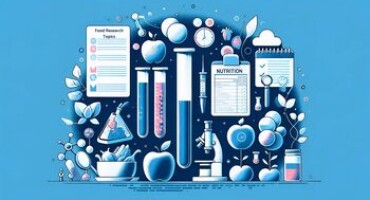
WHY WAIT? PLACE AN ORDER RIGHT NOW!
Just fill out the form, press the button, and have no worries!
We use cookies to give you the best experience possible. By continuing we’ll assume you board with our cookie policy.
MIT Technology Review
- Newsletters
10 Breakthrough Technologies

The end of passwords
For decades, we’ve needed passwords to do things online. New forms of authentication will finally let us get rid of them for good. Instead, we’ll use a link sent via email, a push notification, or a biometric scan. Not only are these methods easier—you don’t have to remember your face—but they tend to be more secure.
Covid variant tracking
The pandemic brought unprecedented investment in genomic sequencing and dramatically expanded the capacity for this type of monitoring around the world. Better surveillance has allowed scientists to track the spread of the covid virus and to quickly spot and warn about new variants.
A long-lasting grid battery
We’re using more renewable power than ever. But what happens when the sun sets or the wind stops? Grid operators need a way to store electricity for later. New iron-based batteries may be up to the task. They’re made using abundant materials and could be cheaper and more practical than other types of grid storage.
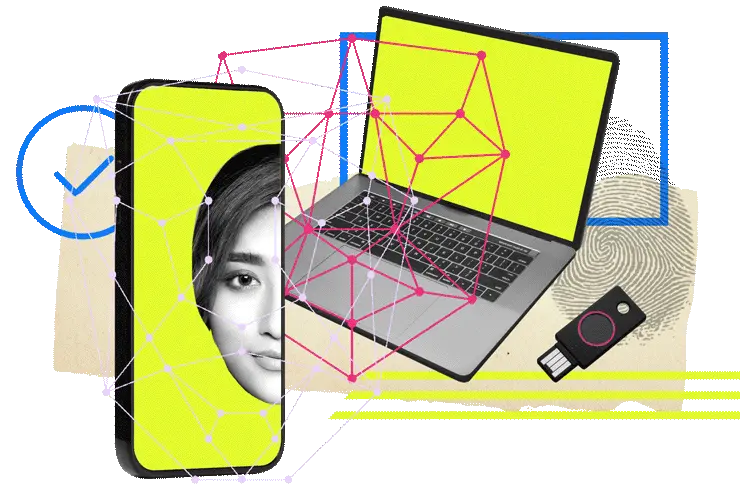
Break down the breakthroughs
Explore the promising, the elusive, and the unexpected with MIT Technology Review.
AI for protein folding
Nearly everything your body does, it does with proteins. And the way a protein folds determines its activity. But figuring out proteins’ structure can take months. Now an AI called AlphaFold2 has solved this longstanding biological puzzle, which could make it possible to quickly design drugs for a wide range of diseases.
Malaria Vaccine
Malaria kills more than 600,000 people a year, most of them children younger than five. A new malaria vaccine approved by the World Health Organization could help save hundreds of thousands of lives every year. It’s also the world’s first vaccine for a parasitic infection.
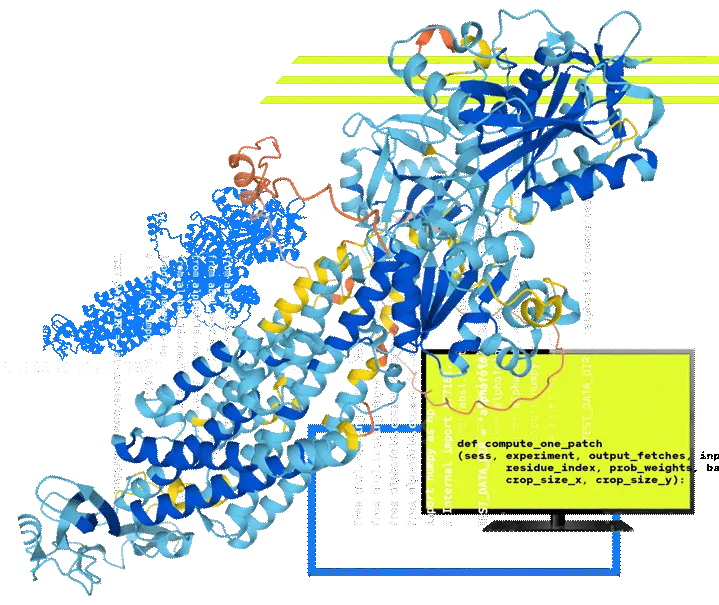
Never miss a breakthrough
Sign up for our daily newsletter, the Download .
By signing up, you agree to our Privacy Policy .
Thank you for submitting your email!
Something went wrong, try again., proof of stake.
Cryptocurrencies like Bitcoin use huge amounts of electricity. This is due to the way transactions are verified, which now requires significant computing power. Proof of stake offers a way to verify transactions without using so much energy. Ethereum plans to transition to the system this year, cutting energy use by 99.95%.
A pill for covid
A new drug from Pfizer provides effective and broad protection against the covid-19 virus, including the newest variants. Now other companies are developing similar medicines. Combined with vaccines, these pills could provide a way for the world to finally exit the pandemic.
Practical fusion reactors
The promise of limitless, carbon-free electricity has for decades inspired researchers to try to make fusion power work. Now one startup plans to deliver it to the grid by the early 2030s. Its design relies on a powerful new magnet that shattered records and should allow the company to build smaller, less expensive reactors.
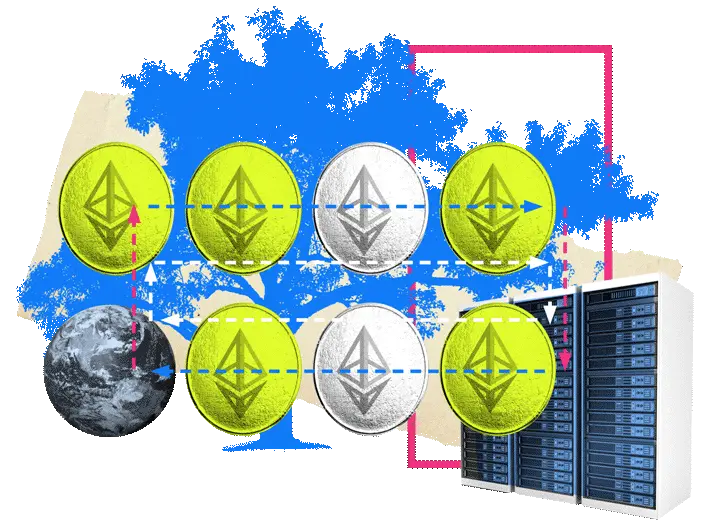
Synthetic data for AI
Training AI requires vast amounts of data. Oftentimes, though, that data is messy or reflects real-world biases, or there are privacy concerns around the information included. Some companies are starting to create and sell synthetic data to avoid these problems. It’s not perfect, but it could be a better way to train AI.
A carbon removal factory
Reducing emissions is a key step to mitigating climate change. But it’s not enough, according to the UN. To avoid catastrophic future warming, we must also remove carbon dioxide from the air. The world’s biggest carbon removal factory recently opened in Iceland to do just that.
you Voted for the 11th breakthrough
Presenting the winner of the 11th breakthrough poll:
Back to top
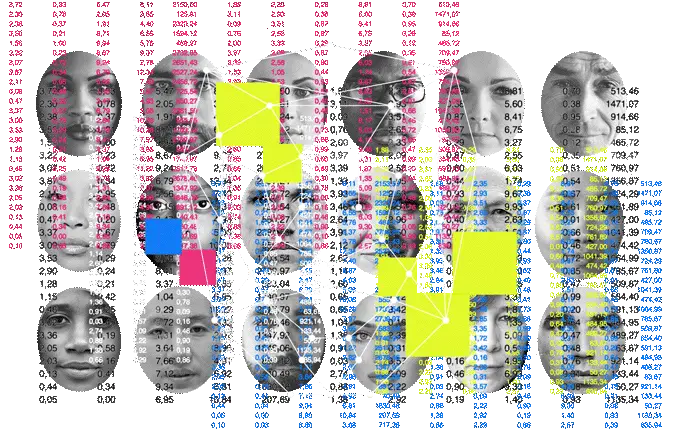
Learn about the winner
Aging clocks.
DNA markers are making it possible to track the aging process in real time, and helping scientists understand why people age at different rates.
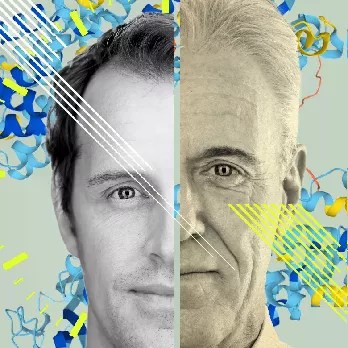
About the list
10 breakthrough technologies 2022.
Our annual list of 10 Breakthrough Technologies highlights the technological advances that we think will have the biggest impact on the world in the years to come. Every year, our reporters and editors survey a wide range of topics, from medicine to energy to digital technologies, to select advances that will affect our lives in meaningful ways. Some have already started to change the way we live and work, while others are poised to do so soon. This is the 21st year we’ve published this list. We hope you enjoy this glimpse into the future.
Editing: Rachel Courtland, Mat Honan, Amy Nordrum, Michael Reilly, and David Rotman Copy editing: Linda Lowenthal Design: Rachel Stein, Solomon Henry Roh Art direction: Eric Mongeon, Rachel Stein Illustration: Andrea D’Aquino Additional images: protein model courtesy of Deepmind, practical fusion reactors photography by Tony Luong, carbon removal factory photography by Kristján Maack Engineering: Jack Burns, Andre Vitorio Analytics: Danielle Golds Engagement: Abby Ivory-Ganja Product: Mariya Sitnova
Thank you for visiting nature.com. You are using a browser version with limited support for CSS. To obtain the best experience, we recommend you use a more up to date browser (or turn off compatibility mode in Internet Explorer). In the meantime, to ensure continued support, we are displaying the site without styles and JavaScript.
- View all journals
- Explore content
- About the journal
- Publish with us
- Sign up for alerts
- TECHNOLOGY FEATURE
- 03 February 2020
Tech tools to make research more open and inclusive
- Kendall Powell 0
Kendall Powell is a freelance writer in Boulder, Colorado.
You can also search for this author in PubMed Google Scholar
Illustration by The Project Twins
Doris Taylor knows the sting of being set apart as different. As a young, lesbian woman starting her career in regenerative-medicine research in the late 1980s, she was often excluded from faculty functions and private meetings on the golf course. “You want to be differentiated when doing great science, but not because of who you are,” she says.
Access options
Access Nature and 54 other Nature Portfolio journals
Get Nature+, our best-value online-access subscription
24,99 € / 30 days
cancel any time
Subscribe to this journal
Receive 51 print issues and online access
185,98 € per year
only 3,65 € per issue
Rent or buy this article
Prices vary by article type
Prices may be subject to local taxes which are calculated during checkout
Nature 578 , 181-182 (2020)
doi: https://doi.org/10.1038/d41586-020-00216-z
Related Articles

Software tools identify forgotten genes
Technology Feature 24 MAY 24

Guidelines for academics aim to lessen ethical pitfalls in generative-AI use
Nature Index 22 MAY 24
Internet use and teen mental health: it’s about more than just screen time
Correspondence 21 MAY 24

What steps to take when funding starts to run out
Career Feature 24 MAY 24
Lack of effective intercultural communication is hobbling academia — fix it for research equity

Harassment of scientists is surging — institutions aren’t sure how to help
News Feature 21 MAY 24

How researchers in remote regions handle the isolation

Brazil’s plummeting graduate enrolments hint at declining interest in academic science careers
Career News 21 MAY 24
Data Analyst for Gene Regulation as an Academic Functional Specialist
The Rheinische Friedrich-Wilhelms-Universität Bonn is an international research university with a broad spectrum of subjects. With 200 years of his...
53113, Bonn (DE)
Rheinische Friedrich-Wilhelms-Universität
Recruitment of Global Talent at the Institute of Zoology, Chinese Academy of Sciences (IOZ, CAS)
The Institute of Zoology (IOZ), Chinese Academy of Sciences (CAS), is seeking global talents around the world.
Beijing, China
Institute of Zoology, Chinese Academy of Sciences (IOZ, CAS)
Full Professorship (W3) in “Organic Environmental Geochemistry (f/m/d)
The Institute of Earth Sciences within the Faculty of Chemistry and Earth Sciences at Heidelberg University invites applications for a FULL PROFE...
Heidelberg, Brandenburg (DE)
Universität Heidelberg
Postdoc: deep learning for super-resolution microscopy
The Ries lab is looking for a PostDoc with background in machine learning.
Vienna, Austria
University of Vienna
Postdoc: development of a novel MINFLUX microscope
The Ries lab is developing super-resolution microscopy methods for structural cell biology. In this project we will develop a fast, simple, and robust
Sign up for the Nature Briefing newsletter — what matters in science, free to your inbox daily.
Quick links
- Explore articles by subject
- Guide to authors
- Editorial policies
Impossible? Let’s see.
Whether we're shaping the future of sustainability, or optimizing algorithms, or even exploring epidemiological studies, Google Research strives to continuously progress science, advance society, and improve the lives of billions of people.

Advancing the state of the art
Our teams advance the state of the art through research, systems engineering, and collaboration across Google. We publish hundreds of research papers each year across a wide range of domains, sharing our latest developments in order to collaboratively progress computing and science.
Learn more about our philosophy.
Watch the film
Link to Youtube Video
Read the latest

May 11 · CONFERENCES & Events
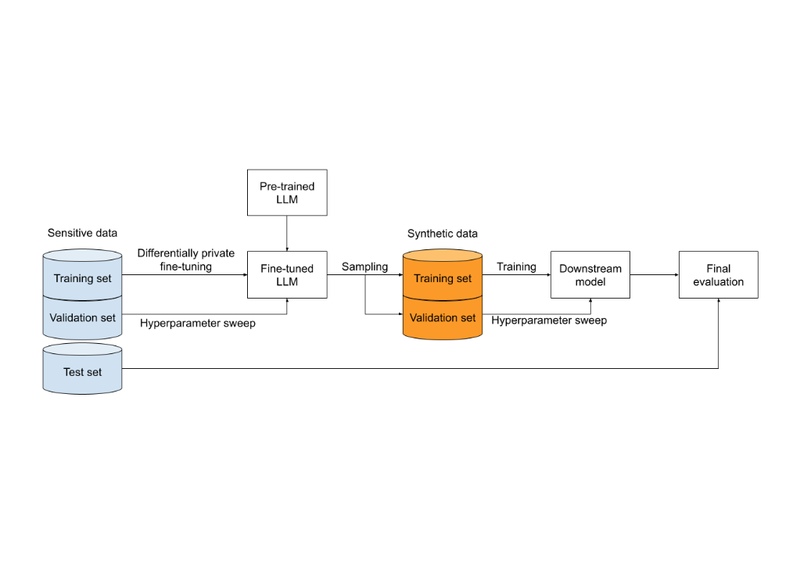
MAY 16 · BLOG
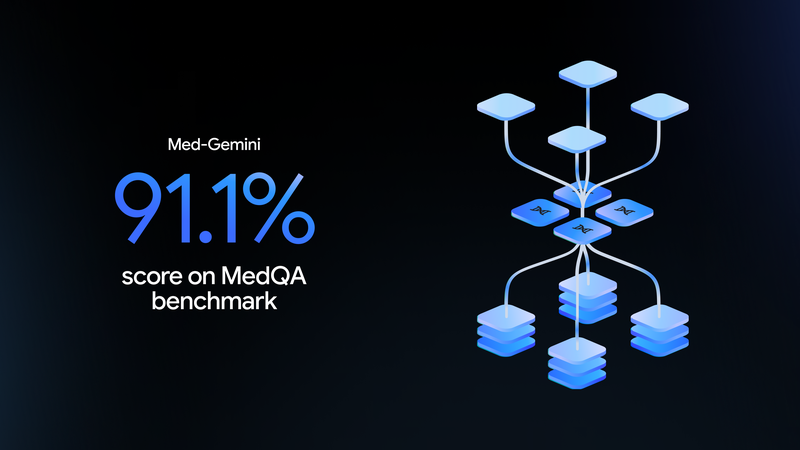
MAY 15 · BLOG
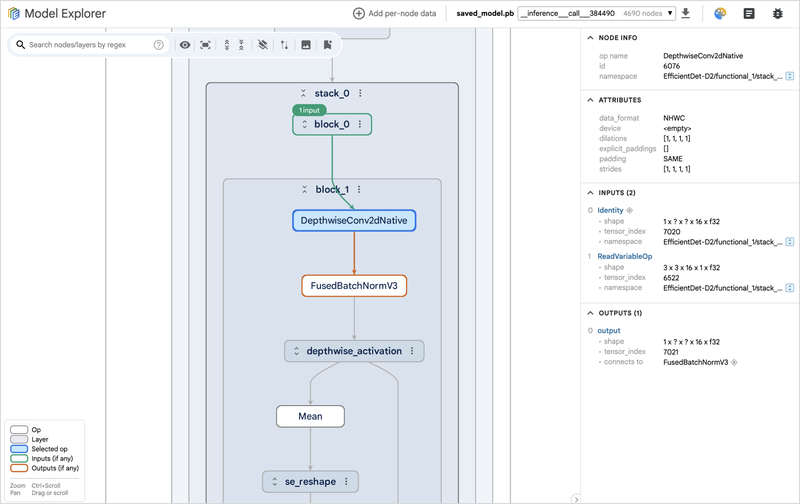
MAY 14 · BLOG
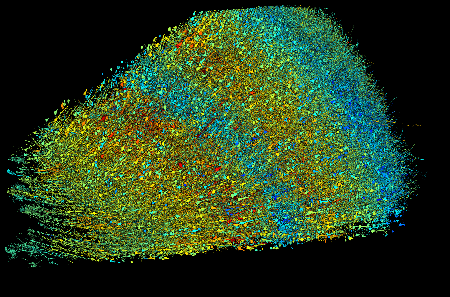
MAY 02 · BLOG
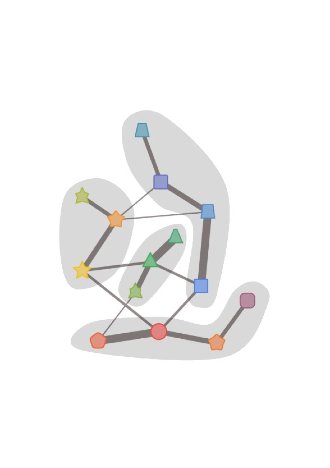
MAY 01 · BLOG
Our research drives real-world change
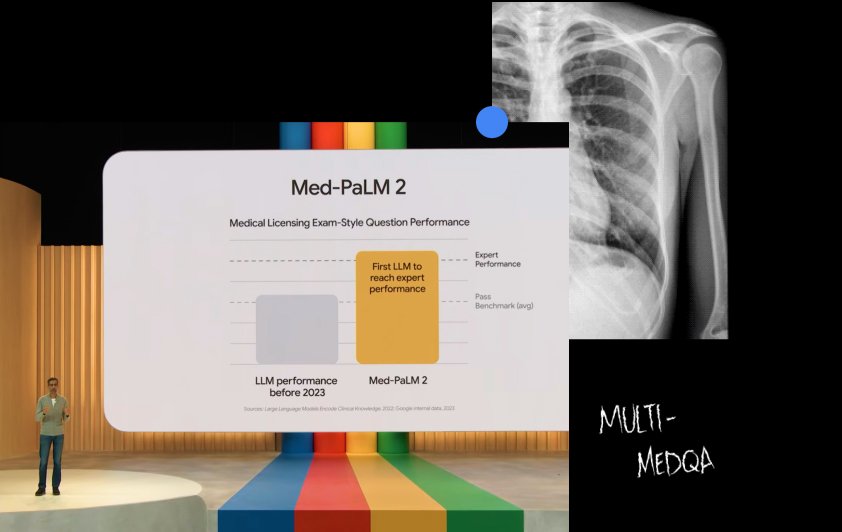
Improving our LLM designed for the medical domain
- Large language models encode clinical knowledge Publication
- Towards Expert-Level Medical Question Answering with Large Language Models Publication
- Our latest health AI research updates Article
- Med-PaLM 2, our expert-level medical LLM Video
Project Contrails
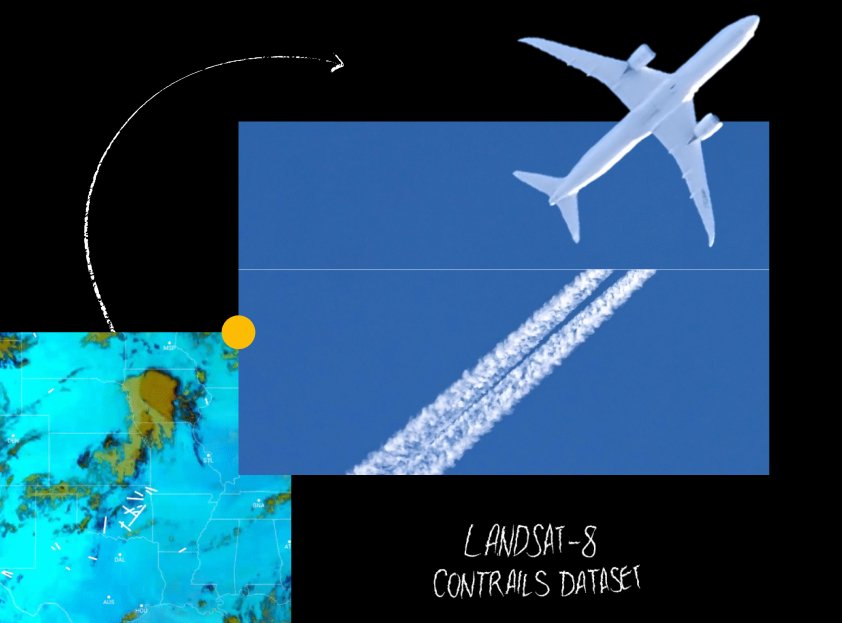
A cost-effective and scalable way AI is helping to mitigate aviation’s climate impact
- A human-labeled Landsat-8 contrails dataset Dataset
- Can Google AI make flying more sustainable? Video
- Estimates of broadband upwelling irradiance fromm GOES-16 ABI Publication
- How AI is helping airlines mitigate the climate impact of contrails Blog
See our impact across other projects

Open Buildings
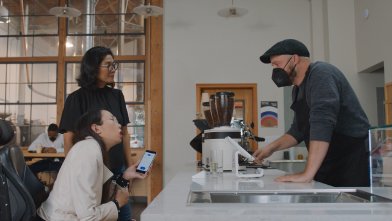
Project Relate
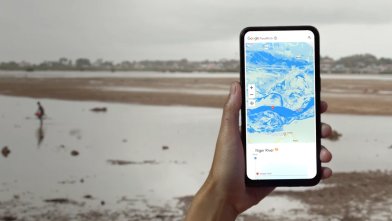
Flood Forecasting
We work across domains
Our vast breadth of work covers AI/ML foundations, responsible human-centric technology, science & societal impact, computing paradigms, and algorithms & optimization. Our research teams impact technology used by people all over the world.
One research paper started it all
The research we do today becomes the Google of the future. Google itself began with a research paper, published in 1998, and was the foundation of Google Search. Our ongoing research over the past 25 years has transformed not only the company, but how people are able to interact with the world and its information.
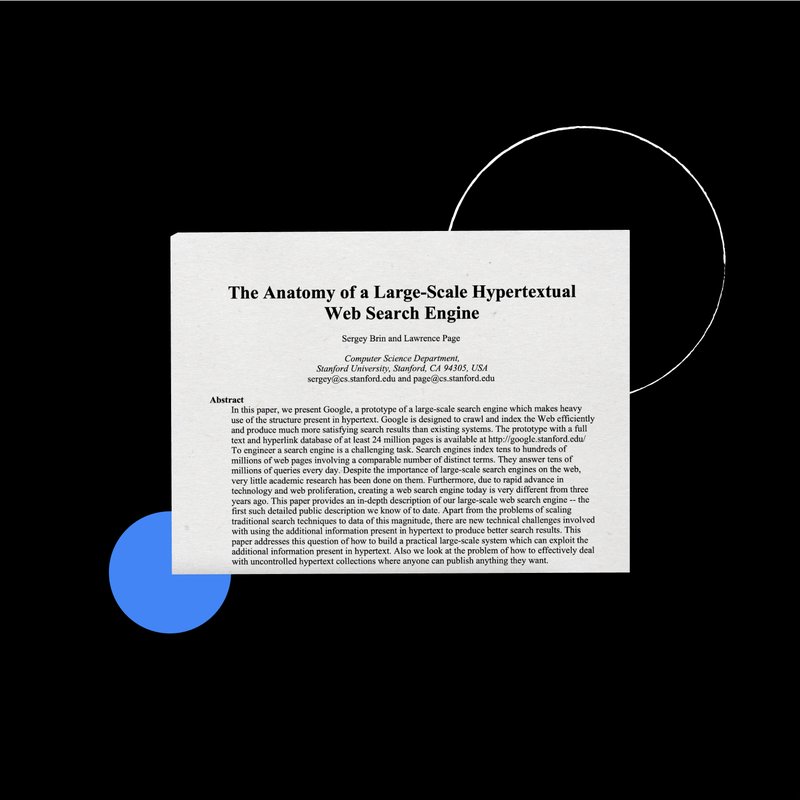
Responsible research is at the heart of what we do
The impact we create from our research has the potential to reach billions of people. That's why everything we do is guided by methodology that is grounded in responsible practices and thorough consideration.

Help us shape the future
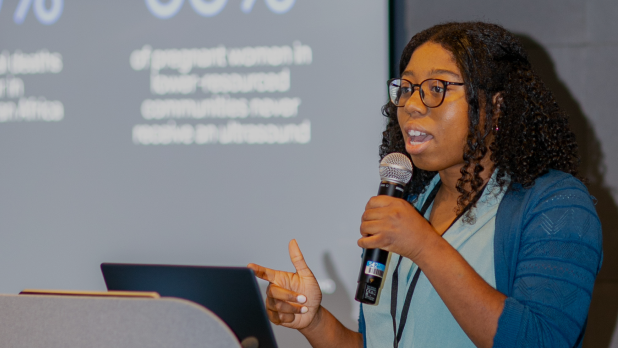
We've been working alongside the academic research community since day one. Explore the ways that we collaborate and provide resources and support through a variety of student and faculty programs.
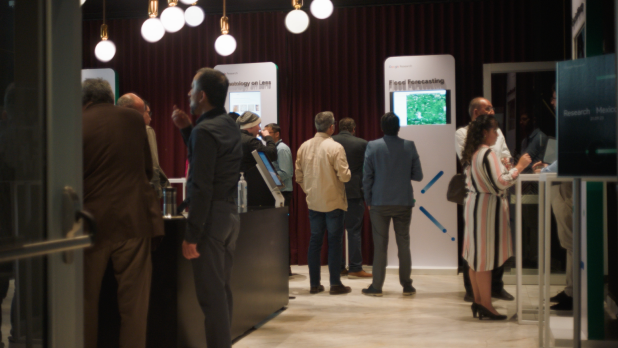
From Accra to Zürich, to our home base in Mountain View, we’re looking for talented scientists, engineers, interns, and more to join our teams not only at Google Research but all research projects across Google.
Explore our other teams and product areas
Google Cloud
Google DeepMind
LABS.GOOGLE

Matching Researchers with Ideal Study Participants
Streamline your participant search or get involved in impactful research projects. We provide the perfect match for every study.
Live Studies
Experience firsthand the thrill of contributing to significant breakthroughs while interacting directly with top researchers. Participate, contribute, and earn rewards in real-time as you help shape the future of science.
South America
North America

Istanbul, Turkey
Dive into our research studies conducted in the vibrant city of Istanbul.

Bucharest, Romania
Dive into our research studies conducted in the vibrant city of Bucharest.

Hyderabad, India
Dive into our research studies conducted in the vibrant city of Hyderabad.

Silchar, India
Dive into our research studies conducted in the vibrant city of Silchar.

Kuala Lumpur, Malaysia
Dive into our research studies conducted in the vibrant city of Kuala Lumpur.

Manila, Philippines
Dive into our research studies conducted in the vibrant city of Manila.

Baguio, Philippines
Dive into our research studies conducted in the vibrant city of Baguio.

Sao Paulo, Brazil
Dive into our research studies conducted in the vibrant city of Sao Paulo.

Mexico City, Mexico
Dive into our research studies conducted in the vibrant city of Mexico City.
Creating Seamless Research Pathways

Earn Rewards by Sharing Your Insights
Leverage your knowledge to earn significant rewards. Our platform is a favorite among top-tier brands and industry professionals, giving you an opportunity to contribute to game-changing studies and initiatives.
Participant Reviews

Research trusted by the largest tech companies
Research is carried out in collaboration with.
.png)
Copyright © TechResearchStudies 2024
College of Computing
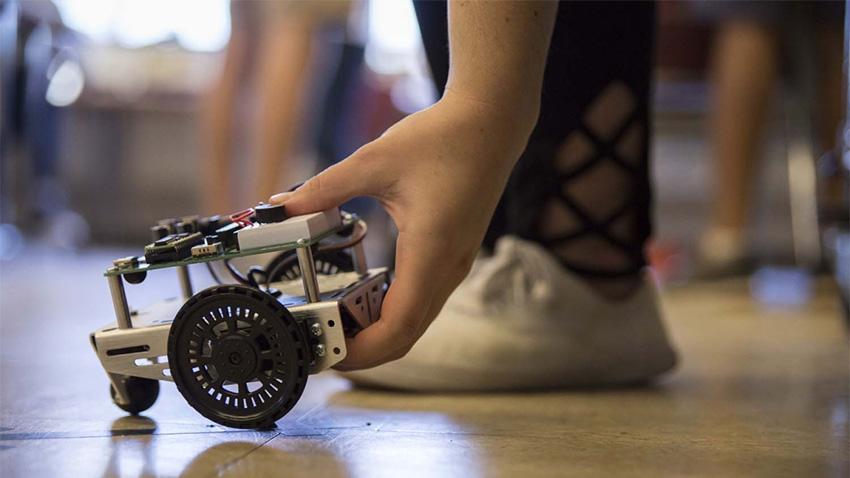
- Research Areas
At Georgia Tech, computing is taken seriously. Founded in 1990, the College of Computing represented just the second computing college at top U.S. universities, and its commitment to that continues to this day. Our five schools and some 140 faculty allow us to explore a wide range of research areas - from the foundations of computing, like networking and software engineering, to disciplines like that focus on the exchange between person and machine, like human-computer interaction and animation, and even to the emerging areas of computational engineering and sciences.
We invite you to use the links below to explore the widening research world of GT Computing.
- Computer Architecture
- Foundations of Artificial Intelligence
- Programming Languages & Software Engineering
- Artificial Intelligence & Machine Learning
- Cognitive and Learning Sciences
- Computer Graphics
- Data Visualization
- Human-Computer Interaction
- Social Computing
- High-Performance Computing
- Data Science and Visual Analytics
- Scientific Computing and Simulation
- Artificial Intelligence and Machine Learning
- Computational Bioscience and Biomedicine
- Applied and Mathematical Cryptography
- Cybersecurity and International Affairs
- Cyber-Physical Systems
- Cybersecurity Policy and Law
- Election Security
- Forensics and Attribution
- Hardware Security and Sidechannel Analysis
- Network and System Security
- Privacy and Data Protection
- Research Centers
- Interdisciplinary Research Institutes
- Undergrad Research

- May 24, 2024 | AI in the Fields: Revolutionizing Agriculture With Smart Technology
- May 24, 2024 | Matcha: Nature’s Answer to Fighting Gum Disease
- May 24, 2024 | “Electronic Spider Silk” Sensors: Revolutionizing Bioelectronics With Eco-Friendly Technology
- May 24, 2024 | Cosmic Ray Sheds New Light on 7,000-Year-Old Ancient Greek Settlement
- May 24, 2024 | Fresh Data From the Cosmos: NASA’s Voyager 1 Resumes Sending Science Data From 15 Billion Miles Away
Technology News
Read the latest technology news on SciTechDaily, your comprehensive source for the latest breakthroughs, trends, and innovations shaping the world of technology. We bring you up-to-date insights on a wide array of topics, from cutting-edge advancements in artificial intelligence and robotics to the latest in green technologies, telecommunications, and more.
Our expertly curated content showcases the pioneering minds, revolutionary ideas, and transformative solutions that are driving the future of technology and its impact on our daily lives. Stay informed about the rapid evolution of the tech landscape, and join us as we explore the endless possibilities of the digital age.
Discover recent technology news articles on topics such as Nanotechnology , Artificial Intelligence , Biotechnology , Graphene , Green Tech , Battery Tech , Computer Tech , Engineering , and Fuel-cell Tech featuring research out of MIT , Cal Tech , Yale , Georgia Tech , Karlsruhe Tech , Vienna Tech , and Michigan Technological University . Discover the future of technology with SciTechDaily.
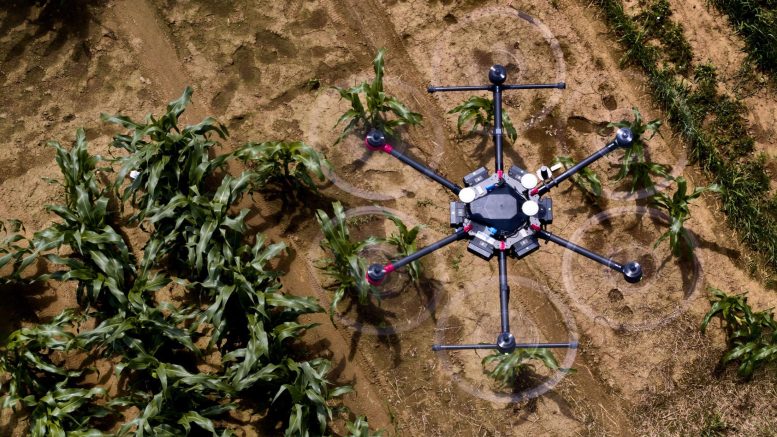
Technology May 24, 2024

AI in the Fields: Revolutionizing Agriculture With Smart Technology
AI and robotics are transforming agriculture, making it more sustainable and efficient through targeted interventions in crop management. Researchers from the University of Bonn are…

“Electronic Spider Silk” Sensors: Revolutionizing Bioelectronics With Eco-Friendly Technology

New Study Reveals Shocking Gaps in AI Empathy

Generative AI Revolutionizes Quantum Computer Programming

Electric Cars Twice As Likely To Hit Pedestrians, According to New Study

Safe and Efficient Energy: Game-Changing Battery Materials Discovered

Stronger, Faster, Lighter: The New Steel That’s Powering Electric Vehicles
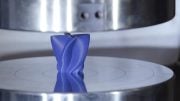
Crushing It: Autonomous AI Robot Creates a Shock-Absorbing Shape No Human Ever Could
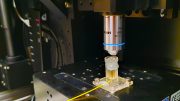
1,000 Times Smaller Than a Grain of Sand – Newest Optical Fiber Technology Could Supercharge Internet Speeds

Technology May 20, 2024
Leading AI Scientists Warn of Unleashing Risks Beyond Human Control
AI experts warn of insufficient global action on AI risks, advocating for strict governance to avert potential catastrophes. Leading AI scientists are urging…

Designing Safer, Higher-Performance Lithium Batteries With Nuclear Magnetic Resonance Spectroscopy
Columbia Engineers use nuclear magnetic resonance spectroscopy to examine lithium metal batteries through a new lens — their findings may help them design new electrolytes…
Revolutionizing Electronics: Air-Doped Organic Semiconductors Unveiled
A new doping method uses air and light to enhance the conductivity of organic semiconductors, promising greater scalability and environmental sustainability in electronic device production….

Technology May 19, 2024
Trustnet Unveils a New Era in Decentralizing Online Fact-Checking
Trustnet, a new browser extension, empowers users to flag and assess the accuracy of any content on any website, promoting a decentralized and user-driven approach…
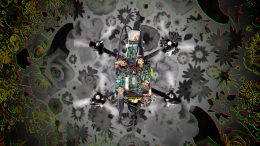
The Future of Flight: Researchers Develop Neuromorphic Drones That Learn Like Animals
The first neuromorphic vision and control system has been implemented in a flying drone. Researchers at Delft University of Technology have created a drone that…
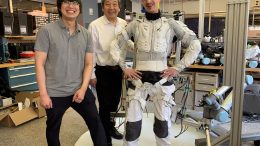
Technology May 18, 2024
Discover How MIT’s SuperLimbs Help Astronauts Stand Tall on the Moon
MIT’s SuperLimbs project aims to improve astronaut mobility on the moon with robotic limbs that help them stand after falls, enhancing safety and efficiency for…
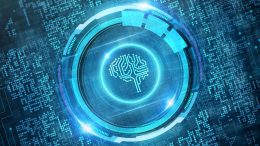
Predicting Chaos With AI: The New Frontier in Autonomous Control
Recent research highlights the development of advanced machine learning algorithms capable of controlling complex systems efficiently. These new algorithms, tested on digital twins of chaotic…
Technology May 17, 2024
Tiny Titans: Revolutionary Microcapacitors Set to Supercharge Next-Gen Electronics
New microcapacitors developed by scientists show record energy and power densities, paving the way for on-chip energy storage in electronic devices. Researchers are striving to…
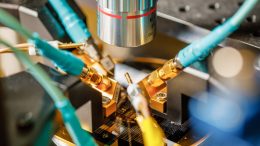
What if Your Earbuds Could Do Everything Your Smartphone Could but Better? New Synthetic Materials Could Make It Possible
What if your earbuds could do everything your smartphone can do already, except better? What sounds a bit like science fiction may actually not be…
Suggestions or feedback?
At MIT, pushing the boundaries of knowledge and possibility is our joyful obsession, and we celebrate fundamental discoveries and practical applications alike. As educators, we also value research as a potent form of learning by doing .
Research flourishes in our 30 departments across five schools and one college , as well as in dozens of centers, labs, and programs that convene experts across disciplines to explore new intellectual frontiers and solve important societal problems. Our on-campus research capabilities are enhanced through the work of MIT Lincoln Laboratory , the Woods Hole Oceanographic Institution , active research relationships with industry , and a wide range of global collaborations .
Centers, Labs & Programs
MIT continually develops organizations and partnerships that foster interdisciplinary work. Listed here are just some of the MIT labs, centers, and programs where groundbreaking research is happening every day.
View Centers, Labs & Programs
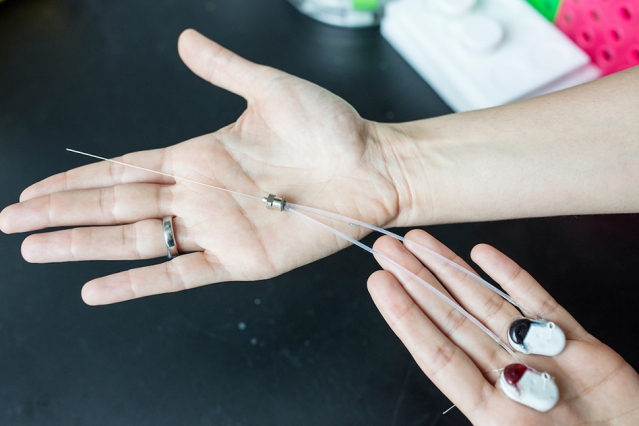
Collaborating Institutions
MIT researchers collaborate with many leading local, national, and international organizations to further drive exploration.
View Collaborating Institutions
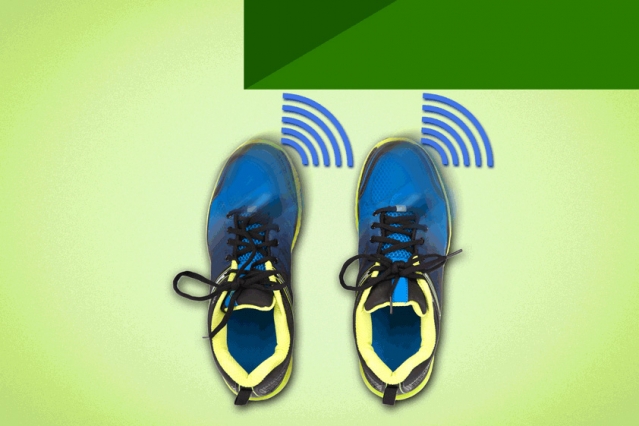
9 Undergraduate Research Projects That Wowed Us This Year
The telegraph. The polio vaccine. The bar code. Light beer. Throughout its history, NYU has been known for innovation, with faculty and alumni in every generation contributing to some of the most notable inventions and scientific breakthroughs of their time. But you don’t wind up in the history books—or peer-reviewed journals—by accident; academic research, like any specialized discipline, takes hard work and lots of practice.
And at NYU, for students who are interested, that training can start early—including during an undergraduate's first years on campus. Whether through assistantships in faculty labs, summer internships, senior capstones, or independent projects inspired by coursework, undergrad students have many opportunities to take what they’re learning in the classroom and apply it to create original scholarship throughout their time at NYU. Many present their work at research conferences, and some even co-author work with faculty and graduate students that leads to publication.
As 2023-2024 drew to a close, the NYU News team coordinated with the Office of the Provost to pull together a snapshot of the research efforts that students undertook during this school year. The nine featured here represent just a small fraction of the impressive work we encountered in fields ranging from biology, chemistry, and engineering to the social sciences, humanities, and the arts.
These projects were presented at NYU research conferences for undergrads, including Migration and Im/Mobility , Pathways for Discovery: Undergraduate Research and Writing Symposium , Social Impact: NYU’s Applied Undergraduate Research Conference , Arts-Based Undergraduate Research Conference , Gallatin Student Research Conference , Dreammaker’s Summit , Tandon’s Research Excellence Exhibit , and Global Engagement Symposium . Learn more about these undergrad research opportunities and others.
Jordan Janowski (CAS '24)
Sade Chaffatt (NYU Abu Dhabi '24)
Elsa Nyongesa (GPH, CAS ’24 )
Anthony Offiah (Gallatin ’26)
Kimberly Sinchi (Tandon ’24) and Sarah Moughal (Tandon ’25)
Rohan Bajaj (Stern '24)
Lizette Saucedo (Liberal Studies ’24)
Eva Fuentes (CAS '24)
Andrea Durham (Tandon ’26)
Jordan Janowski (CAS ’24) Major: Biochemistry Thesis title: “Engineering Chirality for Functionality in Crystalline DNA”
Jordan Janowski (CAS '24). Photo by Tracey Friedman
I work in the Structural DNA Nanotechnology Lab, which was founded by the late NYU professor Ned Seeman, who is known as the father of the field. My current projects are manipulating DNA sequences to self-assemble into high order structures.
Essentially, we’re using DNA as a building material, instead of just analyzing it for its biological functions. It constantly amazes me that this is possible.
I came in as a pre-med student, but when I started working in the lab I realized that I was really interested in continuing my research there. I co-wrote a paper with postdoc Dr. Simon Vecchioni who has been a mentor to me and helped me navigate applying to grad school. I’m headed to Scripps Research in the fall. This research experience has led me to explore some of the molecules that make up life and how they could be engineered into truly unnatural curiosities and technologies.
My PI, Prof. Yoel Ohayon , has been super supportive of my place on the NYU women’s basketball team, which I’m a member of. He’s been coming to my games since sophomore year, and he’ll text me with the score and “great game!”— it’s been so nice to have that support for my interests beyond the lab.
Anthony Offiah (Gallatin ’26) Concentration: Fashion design and business administration MLK Scholars research project title: “project: DREAMER”
Anthony Offiah (Gallatin '26). Photo by Tracey Friedman
In “project: DREAMER,” I explored how much a person’s sense of fashion is a result of their environment or societal pressures based on their identity. Certain groups are pressured or engineered to present a certain way, and I wanted to see how much of the opposing force—their character, their personality—affected their sense of style.
This was a summer research project through the MLK Scholars Program . I did ethnographic interviews with a few people, and asked them to co-design their ideal garments with me. They told me who they are, how they identify, and what they like in fashion, and we synthesized that into their dream garments. And then we had a photo shoot where they were empowered to make artistic choices.
Some people told me they had a hard time conveying their sense of style because they were apprehensive about being the center of attention or of being dissimilar to the people around them. So they chose to conform to protect themselves. And then others spoke about wanting to safeguard the artistic or vulnerable—or one person used the word “feminine”—side of them so they consciously didn’t dress how they ideally would.
We ended the interviews by stating an objective about how this co-designing process didn’t end with them just getting new clothes—it was about approaching fashion differently than how they started and unlearning how society might put them in a certain box without their approval.
My concentration in Gallatin is fashion design and business administration. In the industry some clothing is critiqued and some clothing is praised—and navigating that is challenging, because what you like might not be well received. So doing bespoke fashion for just one person is freeing in a sense because you don’t have to worry about all that extra stuff. It’s just the art. And I like being an artist first and thinking about the business second.
Lizette Saucedo (Global Liberal Studies ’24) Major: Politics, rights, and development Thesis title: “Acknowledging and Remembering Deceased Migrants Crossing the U.S.-Mexican Border”
Lizette Saucedo (Global Liberal Studies '24). Photo by Tracey Friedman
My thesis project is on commemorating migrants who are dying on their journey north to cross the U.S.–Mexican border. I look at it through different theoretical lenses, and one of the terms is necropolitics—how politics shapes the way the State governs life and especially death. And then of the main issues aside from the deaths is that a lot of people in the U.S. don’t know about them, due to the government trying to eschew responsibility for migrant suffering. In the final portion of the thesis, I argue for presenting what some researchers call “migrant artifacts”—the personal belongings left behind by people trying to cross over—to the public, so that people can become aware and have more of a human understanding of what’s going on.
This is my senior thesis for Liberal Studies, but the idea for it started in an International Human Rights course I took with professor Joyce Apsel . We read a book by Jason De León called The Land of the Open Graves , which I kept in the back of my mind. And then when I studied abroad in Germany during my junior year, I noticed all the different memorials and museums, and wondered why we didn’t have the equivalent in the U.S. My family comes from Mexico—my parents migrated—and ultimately all of these interests came together.
I came into NYU through the Liberal Studies program and I loved it. It’s transdisciplinary, which shaped how I view my studies. My major is politics, rights, and development and my minor is social work, but I’ve also studied museum studies, and I’ve always loved the arts. The experience of getting to work one-on-one on this thesis has really fortified my belief that I can combine all those things.
Sade Chaffatt (Abu Dhabi ’24) Major: Biology Thesis title: “The Polycomb repressive component, EED in mouse hepatocytes regulates liver homeostasis and survival following partial hepatectomy.”
Sade Chaffatt (NYU Abu Dhabi '24). Photo courtesy of NYUAD
Imagine your liver as a room. Within the liver there are epigenetic mechanisms that control gene expression. Imagine these epigenetic mechanisms as a dimmer switch, so that you could adjust the light in the room. If we remove a protein that is involved in regulating these mechanisms, there might be dysregulation—as though the light is too bright or too dim. One such protein, EED, plays a crucial role in regulating gene expression. And so my project focuses on investigating whether EED is required in mouse hepatocytes to regulate liver homeostasis and to regulate survival following surgical resection.
Stepping into the field of research is very intimidating when you’re an undergraduate student and know nothing. But my capstone mentor, Dr. Kirsten Sadler , encourages students to present their data at lab meetings and to speak with scientists. Even though this is nerve-wracking, it helps to promote your confidence in communicating science to others in the field.
If you’d asked 16-year-old me, I never would’ve imagined that I’d be doing research at this point. Representation matters a lot, and you often don't see women—especially not Black women—in research. Being at NYUAD has really allowed me to see more women in these spaces. Having had some experience in the medical field through internships, I can now say I’m more interested in research and hope to pursue a PhD in the future.
Kimberly Sinchi (Tandon ’24) Major: Computer Science Sarah Moughal (Tandon ’25) Major: Computer Science Project: Robotic Design Team's TITAN
Sarah Moughal (Tandon '25, left) and Kimberly Sinchi (Tandon '24). Photo by Tracey Friedman
Kimberly: The Robotic Design Team has been active at NYU for at least five years. We’re 60-plus undergrad and grad students majoring in electrical engineering, mechanical engineering, computer science, and integrated design. We’ve named our current project TITAN because of how huge it is. TITAN stands for “Tandon’s innovation in terraforming and autonomous navigation.”
Sarah: We compete in NASA’s lunatics competition every year, which means we build a robot from scratch to be able to compete in lunar excavation and construction. We make pretty much everything in house in the Tandon MakerSpace, and everyone gets a little experience with machining, even if you're not mechanical. A lot of it is about learning how to work with other people—communicating across majors and disciplines and learning how to explain our needs to someone who may not be as well versed in particular technologies as we are.
Kimberly: With NYU’s Vertically Integrated Project I’ve been able to take what I was interested in and actually have a real world impact with it. NASA takes notes on every Rover that enters this competition. What worked and what didn’t actually influences their designs for rovers they send to the moon and to Mars.
Eva Fuentes (CAS ’24) Major: Anthropology Thesis title: “Examining the relationship between pelvic shape and numbers of lumbar vertebrae in primates”
Eva Fuentes (CAS '24). Photo by Tracey Friedman
I came into NYU thinking I wanted to be an art history major with maybe an archeology minor. To do the archeology minor, you have to take the core classes in anthropology, and so I had to take an intro to human evolution course. I was like, this is the coolest thing I’ve learned—ever. So I emailed people in the department to see if I could get involved.
Since my sophomore year, I’ve been working in the Evolutionary Morphology Lab with Scott Williams, who is primarily interested in the vertebral column of primates in the fossil record because of how it can inform the evolution of posture and locomotion in humans.
For my senior thesis, I’m looking at the number of lumbar vertebrae—the vertebrae that are in the lower back specifically—and aspects of pelvic shape to see if it is possible to make inferences about the number of lumbar vertebrae a fossil may have had. The bones of the lower back are important because they tell us about posture and locomotion.
I committed to a PhD program at Washington University in St. Louis a few weeks ago to study biological anthropology. I never anticipated being super immersed in the academic world. I don’t come from an academic family. I had no idea what I was doing when I started, but Scott Williams, and everyone in the lab, is extremely welcoming and easy to talk to. It wasn't intimidating to come into this lab at all.
Elsa Nyongesa (GPH, CAS ’24 ) Major: Global Public Health and Biology Project: “Diversity in Breast Oncological Studies: Impacts on Black Women’s Health Outcomes”
Elsa Nyongesa (GPH, CAS '24). Photo by Tracey Friedman
I interned at Weill Cornell Medicine through their Travelers Summer Research Fellowship Program where I worked with my mentor, Dr. Lisa Newman, who is the head of the International Center for the Study of Breast Cancer Subtypes. I analyzed data on the frequency of different types of breast cancer across racial and ethnic groups in New York. At the same time, I was also working with Dr. Rachel Kowolsky to study minority underrepresentation in clinical research.
In an experiential learning course taught by Professor Joyce Moon Howard in the GPH department, I created a research question based on my internship experience. I thought about how I could combine my experiences from the program which led to my exploration of the correlation between minority underrepresentation in breast oncological studies, and how it affects the health outcomes of Black women with breast cancer.
In my major, we learn about the large scope of health disparities across different groups. This opportunity allowed me to learn more about these disparities in the context of breast cancer research. As a premedical student, this experience broadened my perspective on health. I learned more about the social, economic, and environmental factors influencing health outcomes. It also encouraged me to examine literature more critically to find gaps in knowledge and to think about potential solutions to health problems. Overall, this experience deepened my philosophy of service, emphasizing the importance of health equity and advocacy at the research and clinical level.
Rohan Bajaj (Stern ’24) Major: Finance and statistics Thesis title: “Measuring Socioeconomic Changes and Investor Attitude in Chicago’s Post-Covid Economic Recovery”
Rohan Bajaj (Stern '24). Photo by Tracey Friedman
My thesis is focused on understanding the effects of community-proposed infrastructure on both the socioeconomic demographics of cities and on fiscal health. I’m originally from Chicago, so it made a lot of sense to pay tribute back to the place that raised me. I’m compiling a list of characteristics of infrastructure that has been developed since 2021 as a part of the Chicago Recovery Plan and then assessing how neighborhoods have changed geographically and economically.
I’m looking at municipal bond yields in Chicago as a way of evaluating the fiscal health of the city. Turns out a lot of community-proposed infrastructure is focused in lower income areas within Chicago rather than higher income areas. So that makes the research question interesting, to see if there’s a correlation between the proposed and developed infrastructure projects, and if these neighborhoods are being gentrified alongside development.
I kind of stumbled into the impact investing industry accidentally from an internship I had during my time at NYU. I started working at a renewable energies brokerage in midtown, where my main job was collecting a lot of market research trends and delivering insights on how these different energy markets would come into play. I then worked with the New York State Insurance Fund, where I helped construct and execute their sustainable investment strategy from the ground up.
I also took a class called “Design with Climate Change” with Peter Anker in Gallatin during my junior year, and a lot of that class was focused on how to have climate resilient and publicly developed infrastructure, and understanding the effects it has on society. It made me start thinking about the vital role that physical surroundings play in steering communities.
In the short term I want to continue diving into impact-focused investing and help identify urban planners and city government to develop their communities responsibly and effectively.
Andrea Durham (Tandon, ’26) Major: Biomolecular science Research essay title: “The Rise and Fall of Aduhelm”
Andrea Durham (Tandon '26). Photo by Tracey Friedman
This is an essay I wrote last year in an advanced college essay writing class with Professor Lorraine Doran on the approval of a drug for Alzheimer’s disease called Aduhelm—a monoclonal antibody therapy developed by Biogen in 2021, which was described as being momentous and groundbreaking. But there were irregularities ranging from the design of its clinical trials to government involvement that led to the resignation of three scientists on an advisory panel, because not everybody in the scientific community agreed that it should be approved.
When I was six years old, my grandmother was diagnosed. Seeing the impact that it had over the years broke my heart and ignited a passion in me to pursue research.
When I started at NYU, I wasn’t really sure what I was going to do in the future, or what opportunities I would go after. This writing class really gave me an opportunity to reflect on the things that were important to me in my life. The September after I wrote this paper, I started volunteering in a lab at Mount Sinai for Alzheimer's disease research, and that’s what I’m doing now—working as a volunteer at the Center for Molecular Integrative Neuroresilience under Dr. Giulio Pasinetti. I have this opportunity to be at the forefront, and because of the work I did in my writing class I feel prepared going into these settings with an understanding of the importance of conducting ethical research and working with integrity.
NSF Funded Expedition Project Uses AI to Rethink Computer Operating Systems
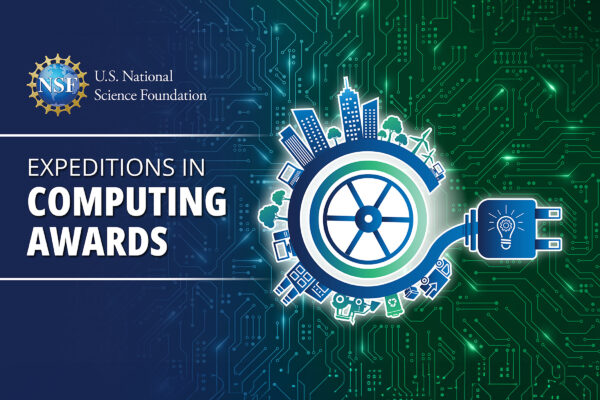
AUSTIN, Texas — Research that will use artificial intelligence to boost the performance and energy efficiency of computer operating systems will be led by a team from The University of Texas at Austin, thanks to a major grant from the U.S. National Science Foundation’s Expeditions in Computing program.
Today’s operating systems pose a significant barrier to a number of promised exciting innovations in computer hardware and applications — from personal assistant robots to autonomous vehicles to edge computing that could enable smart cities and less energy-intensive cloud computing. These operating systems often follow “one-size-fits-all” rules for how hardware resources get allocated between different applications running simultaneously. The inflexibility of these rules makes it hard to integrate new advancements, resulting in poor performance and inefficient use, a problem the UT research team plans to tackle by leveraging AI.
“Our project will employ AI-aided intelligent resource management and auto-adapt as new applications and hardware emerge,” said Aditya Akella, the Regents Chair in Computer Sciences #1 who is leading the project. “This will enable computing devices to be used at near-optimal efficiency while meeting the needs of arbitrary applications, and it will make computing infrastructure ‘self-driving’ by automating OS implementation and management.”
Akella said the project would extend beyond academics, bringing together not only computer scientists from UT, the Texas Advanced Computing Center, the University of Illinois at Urbana-Champaign, the University of Pennsylvania and the University of Wisconsin-Madison, but also industry partners from Amazon, Bosch, Cisco, Google, Microsoft and Broadcom.
“These partners collectively develop and run operating systems for much of the world’s computing infrastructure, and we will work with them to create the next-generation open-source intelligent and adaptive OS,” Akella said. “We believe that the project offers a timely opportunity to fundamentally change the trajectory of computing.”
He added that the new style of OS could help autonomous robots become “the smartphones of the 2030s and beyond.”
“The smartphone revolution was enabled by new OS frameworks (for example, iOS and Android) that enabled users to run arbitrary third-party apps that have come to determine how they interact with technology and essential services,” he said. “LDOS can similarly usher in the era of affordable personal robots and apps that support our day-to-day activities and improve society for all, particularly for aging and disadvantaged populations.”
In addition to the research initiative, the project will create new undergraduate and graduate curricula with modules, courses and certificates exploring the interplay of computer systems and AI. The project’s initiatives for broadening participation are designed to cultivate leadership among underrepresented groups in AI and prepare them for AI and computer systems technology and research careers. These initiatives seek to benefit hundreds to thousands of students each year.
This project has a natural synergy with UT’s Machine Learning Laboratory, where fundamental questions on new generative AI and machine learning techniques are being explored, and with the Center for Generative AI, which offers high-end GPU resources to train and evaluate new generative AI models.
Co-principal investigators from UT’s Department of Computer Science are Joydeep Biswas, Swarat Chaudhuri, Shuchi Chawla, Işıl Dillig, Daehyeok Kim, and Chris Rossbach. Co-PIs from UT’s Chandra Family Department of Electrical and Computer Engineering are Alex Dimakis and Sanjay Shakkottai.
The grant is for $12 million over five years, of which $9.3 million will come to UT. Expeditions awards represent some of the largest investments provided by the NSF’s Directorate for Computer and Information Science and Engineering. The full name of the project is NSF Expeditions in Computing: Learning Directed Operating System (LDOS) – A Clean-Slate Paradigm for Operating Systems Design and Implementation.
This new support further advances the University’s Year of AI , an initiative showcasing UT’s commitment to developing innovations and growing leaders to navigate the ever-evolving landscape brought about by AI.
Explore Latest Articles
May 20, 2024
Conquering Breast Cancer Using Supercomputers, Data, And Mathematical Modeling

Otters, Especially Females, Use Tools To Survive a Changing World

Artificial Intelligence Trained to Draw Inspiration From Images, Not Copy Them
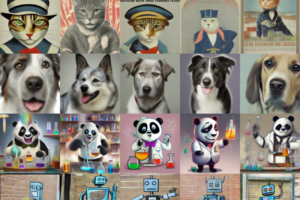
Georgia Tech Research Projects
Covid-19 research projects.
Connecting the Georgia Tech community to Covid-19-related research across campus and facilities
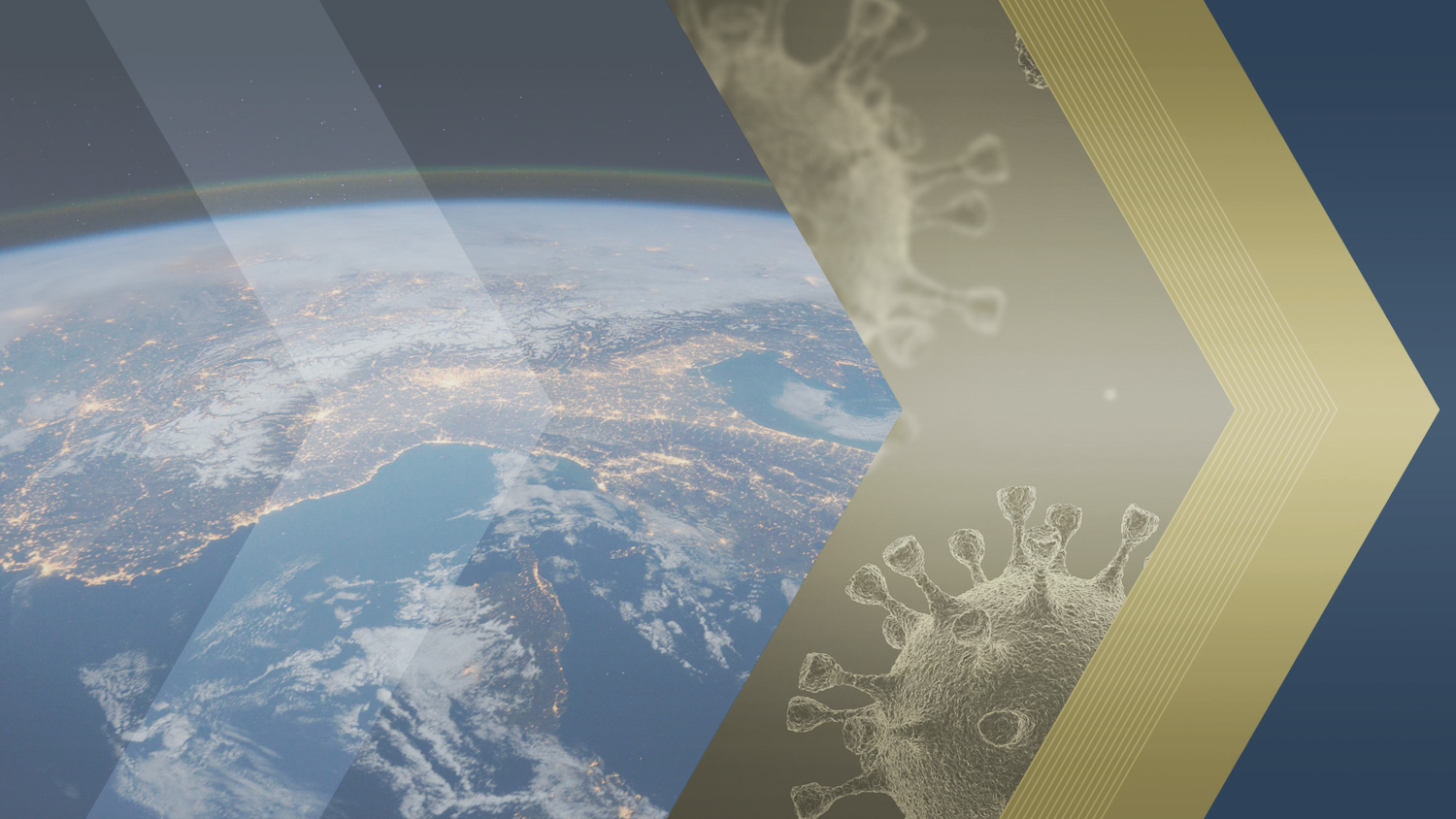
Welcome to Georgia Tech Research Projects
This site is designed to provide a centralized location for all projects inside of the Georgia Tech community related to the Covid-19 response. This site allows users to filter and sort through the database and glean pertinent information about projects of interest. If perhaps you are looking to collaborate with others doing research in a similar or mutually beneficial area of research, start here as this site is designed to promote cross-campus collaboration.
Visitors to the site can start by viewing all projects . You will be able to sort and filter to predefined categories for ease of navigation.
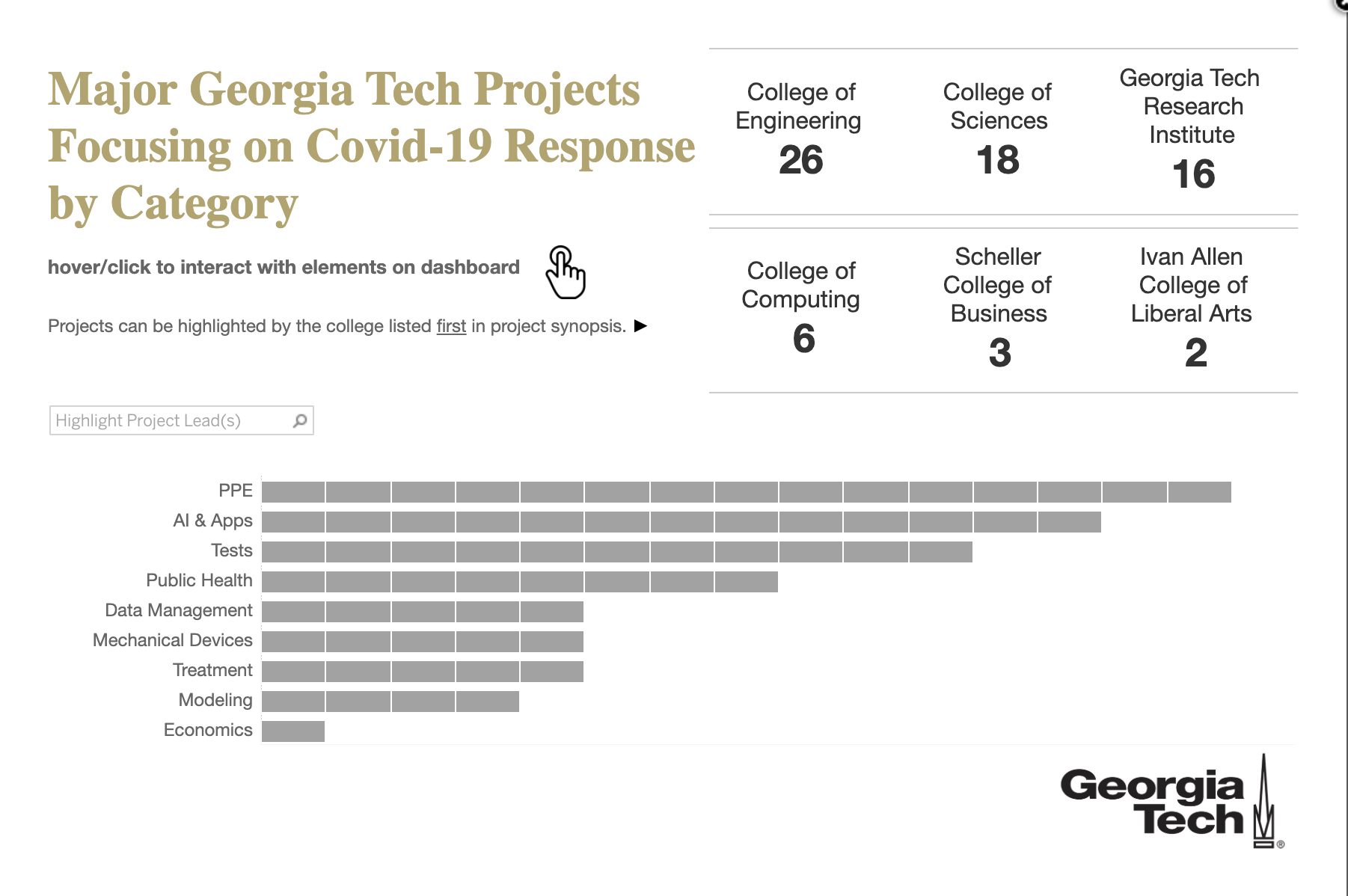
Interactive Dashboard
We now have an interactive dashboard that can display project data for our categories.
Recently Updated
Cdl - recovery.
CDL-Recovery is a pivot of the Creative Destruction Lab (CDL), an objective-setting mentoring program for early-stage science projects. CDL-Recovery focuses on mentoring and developing ventures and projects in two streams: public health and economic recovery. The goal is to identify and support ventures with prospects for massive scalability, developing products and services that will enhance public health resilience and promote economic recovery in a changing work environment over six to 24 months.
The team’s work on CDL-Recovery, which is a collaborative effort of CDL’s global network, is both an end in itself and the precursor to CDL-Atlanta, which is due to launch in Fall 2020 and will focus on consumer health and retail tech.
For more information about this effort, check out the press release CDL launches rapid response effort.
Our objective is to demonstrate disinfecting using UV-C light directed by a robot arm. By applying the light extremely close to the surface (about 5 cm), we hope to drastically decrease the time needed to kill pathogens.
Completed Projects
Covid-19 patient monitoring using the smartphone.
This project aims to support the development of a cross-platform smartphone application for the triage and monitoring of Covid-19 patients. The team plans to do so by leveraging sensors data collected with smartphones and the existing Health Readiness and Performance System (HRAPS) cloud for machine learning and data analytics. The developing technology will also apply to the longitudinal tracking of exposure to chemical and biological threats in military environments. For now, the technology will allow doctors and healthcare facilities to manage readmissions for Covid-19 patients better, intervene on patients before they become critical with potentially life-saving implications, and reduce the burden on emergency rooms and hospitals.
Covid-19 Response Assessment
- Project details will not be shared at this time. For any inquiries, please use the contact us section on this site.
COTS Parts Ventilator
This project aims to design an emergency ventilator that could be built entirely with widely available off-the-shelf parts from hardware and auto parts stores. The design valued efficiency and simplicity in multiple areas.
- No specialized tools, computer programming, or electronics/manufacturing skills are required.
- The design can be built by one or two people in approximately one day.
- The total cost is roughly $350 in parts.
In the basic configuration, the design supports a pressure-controlled constant mandatory ventilation mode (PC-CMV), with continuous independent control of positive inspiratory pressure (PIP), positive end-expiratory pressure (PEEP), and an inhale/exhale ratio selection of either 1:1 or 3:1.
Viral Nasal Swab-State-Wide Testing
Support the manufacturing industry in upscaling the production of plastic nasal swabs that go into Covid-19 swab kits. Researchers teamed with Kimberly Clark, connected the company to Puritan Medical Diagnostics, and provided other "learning curve" support. The goal has been to support the manufacturers in soliciting key manufacturing expertise. The team has provided several key expert connections, so the companies can upscale their production more rapidly. Researchers have learned that the core U.S. manufacturers have the capacity to supply millions of swabs per week, but they still need to repurpose these to Covid-19 kits and break out of existing supply contracts for other supplies. Thus, the critical limitations are at the distribution level though sufficient materials exist. The effort is being handled by these manufacturers, and the team is on standby for further input as needed.
Cornell Chronicle
- Architecture & Design
- Arts & Humanities
- Business, Economics & Entrepreneurship
- Computing & Information Sciences
- Energy, Environment & Sustainability
- Food & Agriculture
- Global Reach
- Health, Nutrition & Medicine
- Law, Government & Public Policy
- Life Sciences & Veterinary Medicine
- Physical Sciences & Engineering
- Social & Behavioral Sciences
- Coronavirus
- News & Events
- Public Engagement
- New York City
- Photos of the Week
- Big Red Sports
- Freedom of Expression
- Student Life
- University Statements
Around Cornell
- All Stories
- In the News
- Expert Quotes
- Cornellians
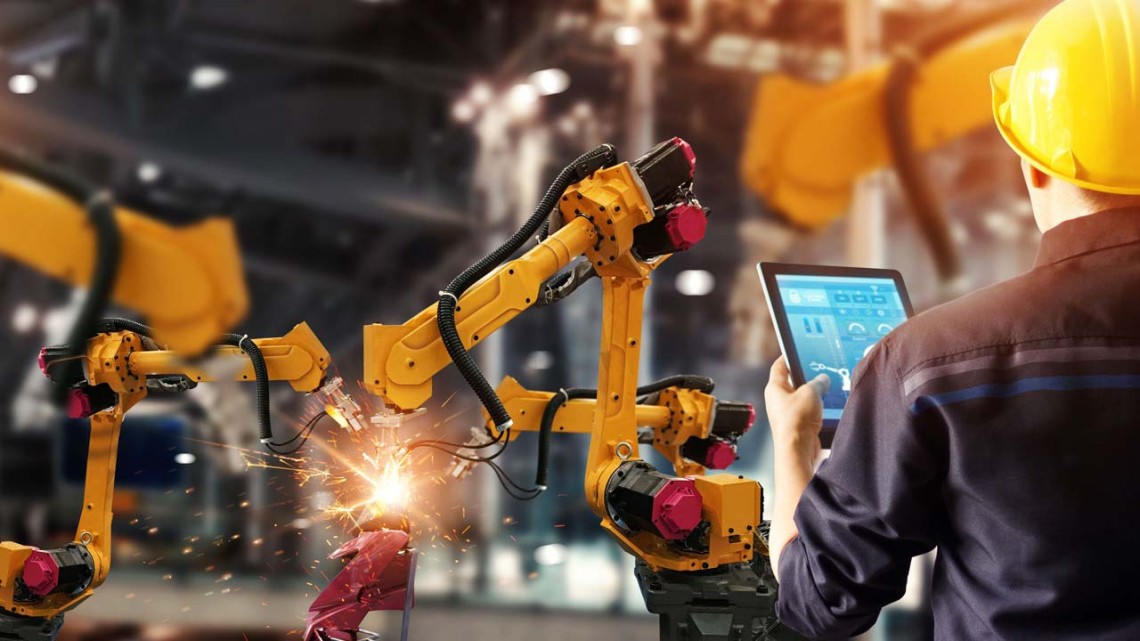
News directly from Cornell's colleges and centers
Research: Technology is changing how companies do business
By sarah mangus-sharpe.
A new study from the Cornell SC Johnson College of Business advances understanding of the U.S. production chain evolution amidst technological progress in information technology (IT), shedding light on the complex connections between business IT investments and organizational design. Advances in IT have sparked significant changes in how companies design their production processes. In the paper " Production Chain Organization in the Digital Age: Information Technology Use and Vertical Integration in U.S. Manufacturing ," which published April 30 in Management Science, Chris Forman , the Peter and Stephanie Nolan Professor in the Dyson School of Applied Economics and Management , and his co-author delved into what these changes mean for businesses and consumers.
Forman and Kristina McElheran, assistant professor of strategic management at University of Toronto, analyzed U.S. Census Bureau data of over 5,600 manufacturing plants to see how the production chains of businesses were affected by the internet revolution. Their use of census data allowed them to look inside the relationships among production units within and between companies and how transaction flows changed after companies invested in internet-enabled technology that facilitated coordination between them. The production units of many of the companies in their study concurrently sold to internal and external customers, a mix they refer to as plural selling. They found that the reduction in communication costs enabled by the internet shifted the mix toward more sales outside of the firm, or less vertical integration.
The research highlights the importance of staying ahead of the curve in technology. Companies that embrace digital technologies now are likely to be the ones that thrive in the future. And while there are still many unanswered questions about how these changes will play out, one thing is clear: The relationship between technology and business is only going to become more and more intertwined in the future.
Read the full story on the Cornell SC Johnson College of Business news site, BusinessFeed.
Media Contact
Media relations office.
Get Cornell news delivered right to your inbox.
You might also like

Gallery Heading
Suggestions or feedback?
MIT News | Massachusetts Institute of Technology
- Machine learning
- Social justice
- Black holes
- Classes and programs
Departments
- Aeronautics and Astronautics
- Brain and Cognitive Sciences
- Architecture
- Political Science
- Mechanical Engineering
Centers, Labs, & Programs
- Abdul Latif Jameel Poverty Action Lab (J-PAL)
- Picower Institute for Learning and Memory
- Lincoln Laboratory
- School of Architecture + Planning
- School of Engineering
- School of Humanities, Arts, and Social Sciences
- Sloan School of Management
- School of Science
- MIT Schwarzman College of Computing
Study explains why the brain can robustly recognize images, even without color
Press contact :, media download.
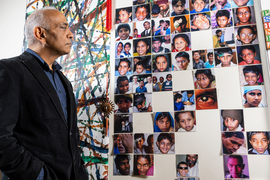
*Terms of Use:
Images for download on the MIT News office website are made available to non-commercial entities, press and the general public under a Creative Commons Attribution Non-Commercial No Derivatives license . You may not alter the images provided, other than to crop them to size. A credit line must be used when reproducing images; if one is not provided below, credit the images to "MIT."
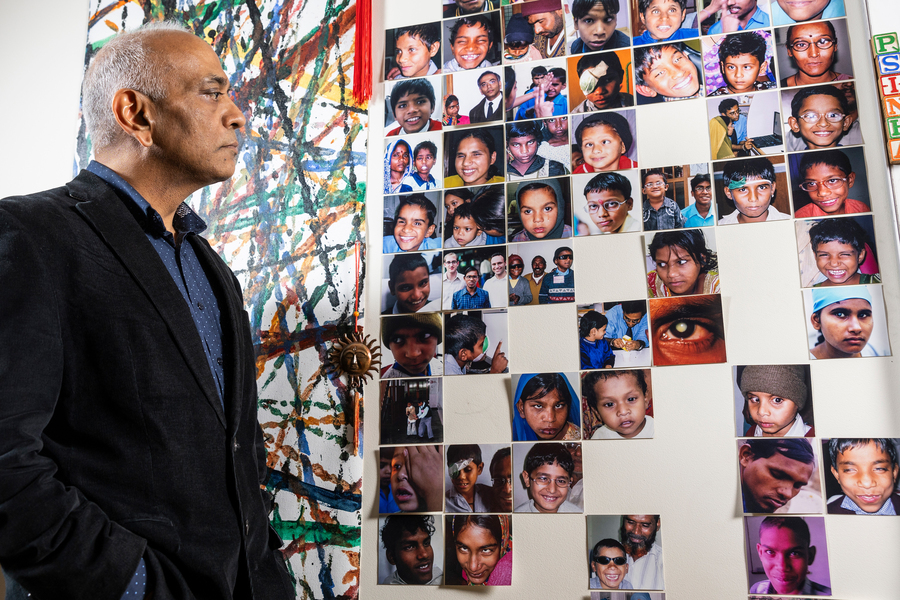
Previous image Next image
Even though the human visual system has sophisticated machinery for processing color, the brain has no problem recognizing objects in black-and-white images. A new study from MIT offers a possible explanation for how the brain comes to be so adept at identifying both color and color-degraded images.
Using experimental data and computational modeling, the researchers found evidence suggesting the roots of this ability may lie in development. Early in life, when newborns receive strongly limited color information, the brain is forced to learn to distinguish objects based on their luminance, or intensity of light they emit, rather than their color. Later in life, when the retina and cortex are better equipped to process colors, the brain incorporates color information as well but also maintains its previously acquired ability to recognize images without critical reliance on color cues.
The findings are consistent with previous work showing that initially degraded visual and auditory input can actually be beneficial to the early development of perceptual systems.
“This general idea, that there is something important about the initial limitations that we have in our perceptual system, transcends color vision and visual acuity. Some of the work that our lab has done in the context of audition also suggests that there’s something important about placing limits on the richness of information that the neonatal system is initially exposed to,” says Pawan Sinha, a professor of brain and cognitive sciences at MIT and the senior author of the study.
The findings also help to explain why children who are born blind but have their vision restored later in life, through the removal of congenital cataracts, have much more difficulty identifying objects presented in black and white. Those children, who receive rich color input as soon as their sight is restored, may develop an overreliance on color that makes them much less resilient to changes or removal of color information.
MIT postdocs Marin Vogelsang and Lukas Vogelsang, and Project Prakash research scientist Priti Gupta, are the lead authors of the study, which appears today in Science . Sidney Diamond, a retired neurologist who is now an MIT research affiliate, and additional members of the Project Prakash team are also authors of the paper.
Seeing in black and white
The researchers’ exploration of how early experience with color affects later object recognition grew out of a simple observation from a study of children who had their sight restored after being born with congenital cataracts. In 2005, Sinha launched Project Prakash (the Sanskrit word for “light”), an effort in India to identify and treat children with reversible forms of vision loss.
Many of those children suffer from blindness due to dense bilateral cataracts. This condition often goes untreated in India, which has the world’s largest population of blind children, estimated between 200,000 and 700,000.
Children who receive treatment through Project Prakash may also participate in studies of their visual development, many of which have helped scientists learn more about how the brain's organization changes following restoration of sight, how the brain estimates brightness, and other phenomena related to vision.
In this study, Sinha and his colleagues gave children a simple test of object recognition, presenting both color and black-and-white images. For children born with normal sight, converting color images to grayscale had no effect at all on their ability to recognize the depicted object. However, when children who underwent cataract removal were presented with black-and-white images, their performance dropped significantly.
This led the researchers to hypothesize that the nature of visual inputs children are exposed to early in life may play a crucial role in shaping resilience to color changes and the ability to identify objects presented in black-and-white images. In normally sighted newborns, retinal cone cells are not well-developed at birth, resulting in babies having poor visual acuity and poor color vision. Over the first years of life, their vision improves markedly as the cone system develops.
Because the immature visual system receives significantly reduced color information, the researchers hypothesized that during this time, the baby brain is forced to gain proficiency at recognizing images with reduced color cues. Additionally, they proposed, children who are born with cataracts and have them removed later may learn to rely too much on color cues when identifying objects, because, as they experimentally demonstrated in the paper, with mature retinas, they commence their post-operative journeys with good color vision.
To rigorously test that hypothesis, the researchers used a standard convolutional neural network, AlexNet, as a computational model of vision. They trained the network to recognize objects, giving it different types of input during training. As part of one training regimen, they initially showed the model grayscale images only, then introduced color images later on. This roughly mimics the developmental progression of chromatic enrichment as babies’ eyesight matures over the first years of life.
Another training regimen comprised only color images. This approximates the experience of the Project Prakash children, because they can process full color information as soon as their cataracts are removed.
The researchers found that the developmentally inspired model could accurately recognize objects in either type of image and was also resilient to other color manipulations. However, the Prakash-proxy model trained only on color images did not show good generalization to grayscale or hue-manipulated images.
“What happens is that this Prakash-like model is very good with colored images, but it’s very poor with anything else. When not starting out with initially color-degraded training, these models just don’t generalize, perhaps because of their over-reliance on specific color cues,” Lukas Vogelsang says.
The robust generalization of the developmentally inspired model is not merely a consequence of it having been trained on both color and grayscale images; the temporal ordering of these images makes a big difference. Another object-recognition model that was trained on color images first, followed by grayscale images, did not do as well at identifying black-and-white objects.
“It’s not just the steps of the developmental choreography that are important, but also the order in which they are played out,” Sinha says.
The advantages of limited sensory input
By analyzing the internal organization of the models, the researchers found that those that begin with grayscale inputs learn to rely on luminance to identify objects. Once they begin receiving color input, they don’t change their approach very much, since they’ve already learned a strategy that works well. Models that began with color images did shift their approach once grayscale images were introduced, but could not shift enough to make them as accurate as the models that were given grayscale images first.
A similar phenomenon may occur in the human brain, which has more plasticity early in life, and can easily learn to identify objects based on their luminance alone. Early in life, the paucity of color information may in fact be beneficial to the developing brain, as it learns to identify objects based on sparse information.
“As a newborn, the normally sighted child is deprived, in a certain sense, of color vision. And that turns out to be an advantage,” Diamond says.
Researchers in Sinha’s lab have observed that limitations in early sensory input can also benefit other aspects of vision, as well as the auditory system. In 2022, they used computational models to show that early exposure to only low-frequency sounds, similar to those that babies hear in the womb, improves performance on auditory tasks that require analyzing sounds over a longer period of time, such as recognizing emotions. They now plan to explore whether this phenomenon extends to other aspects of development, such as language acquisition.
The research was funded by the National Eye Institute of NIH and the Intelligence Advanced Research Projects Activity.
Share this news article on:
Related links.
- Project Prakash
- Department of Brain and Cognitive Sciences
Related Topics
- Brain and cognitive sciences
Related Articles
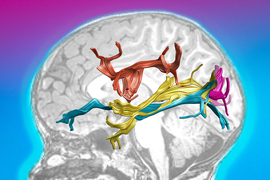
Scientists discover anatomical changes in the brains of the newly sighted
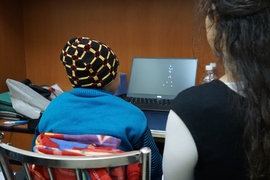
After a lifetime of blindness, newly sighted can immediately identify human locomotion
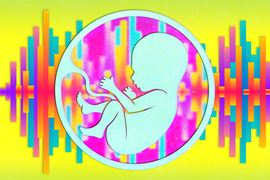
Early sound exposure in the womb shapes the auditory system
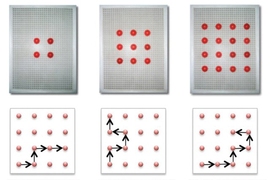
Vision is key to spatial skills
Previous item Next item
More MIT News

Understanding why autism symptoms sometimes improve amid fever
Read full story →

School of Engineering welcomes new faculty

Turning up the heat on next-generation semiconductors

Sarah Millholland receives 2024 Vera Rubin Early Career Award

A community collaboration for progress
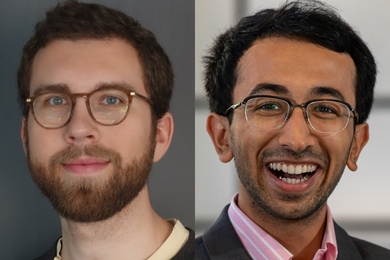
MIT scholars will take commercial break with entrepreneurial scholarship
- More news on MIT News homepage →
Massachusetts Institute of Technology 77 Massachusetts Avenue, Cambridge, MA, USA
- Map (opens in new window)
- Events (opens in new window)
- People (opens in new window)
- Careers (opens in new window)
- Accessibility
- Social Media Hub
- MIT on Facebook
- MIT on YouTube
- MIT on Instagram
Northeastern researcher creates AI tools that help gig workers solve problems
- Search Search
Northeastern professor Saiph Savage works with gig workers to create AI-enhanced collective bargaining tools to change the power dynamic on the gig labor market.
- Copy Link Link Copied!

Researchers at Northeastern University have created artificial intelligence tools to help gig workers organize, collect their own job-related data, analyze their work problems and come up with a strategy to implement solutions.
“Building solid AI-enhanced solutions to enable gig workers’ collective action will pave the way for a fair and ethical gig economy — one with fair wages, humane working conditions and increased job security,” says Saiph Savage , assistant professor and director of the Civic A.I. Lab at Northeastern’s Khoury College of Computer Sciences.
Gig work is typically performed by a freelancer or independent contractor. It is used by rideshare apps such as Uber and Lyft, grocery-delivery services like Instacart, and Upwork, a marketplace that connects companies with temporary on-demand workers.
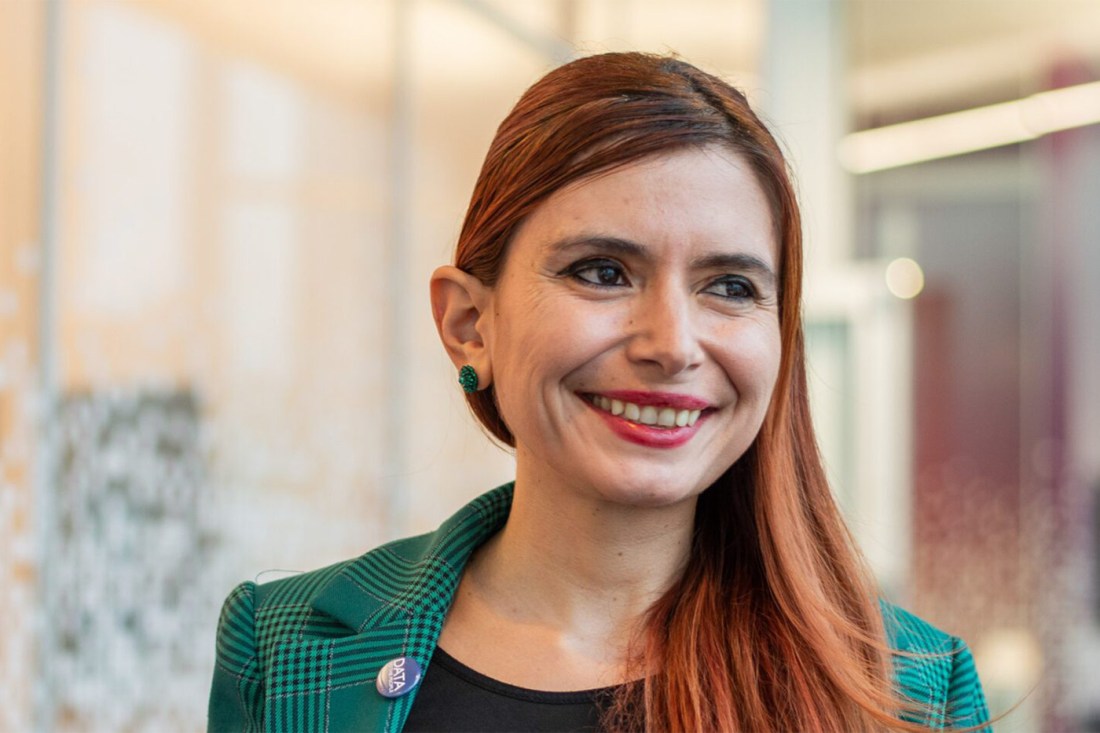
Gig work provides flexibility to workers and employers, Savage says, and offers economic opportunities to disadvantaged groups. But it also presents challenges for some gig workers such as irregular schedules and unsteady income, lack of job security, isolation and surveillance associated with online work.
The Massachusetts attorney general recently took Uber and Lyft to court over the employment status of its gig workers. The rideshare apps have threatened to leave markets if its drivers are converted from independent contractors to employees.
Featured Stories

Extremist communities continue to rely on YouTube for hosting, but most videos are viewed off-site, Northeastern research finds

Can Scarlett Johansson sue OpenAI over its voice assistant? Northeastern intellectual property law experts weigh in

Should Supreme Court justices be flying controversial flags above their homes?

Will it be a busy summer for airline travel? Northeastern expert offers tips to avoid cancellations — and headaches
For Savage, it’s all about giving gig workers the tools — in this case AI tools — to make the most-informed decisions with the greatest amount of data.
“At Northeastern, we have been developing a lot of AI tools that can support gig workers in their collective action to fight for better opportunities,” Savage says.
Tools recently released by the Civic A.I. Lab include GigSousveillance, GigSense and GigAction.
The tools use large language models and social theories to create “intelligent assistants” that help gig workers understand their collective problems, propose solutions and take collective action. The tools strengthen gig workers’ collective opinion and negotiation power, Savage says.
GigSousveillance allows workers to collect their own job-related data and use that data to measure how big a workplace problem has become.
GigSense equips workers with an online AI assistant that helps make sense of their workplace problems and strategically come up with solutions.
GigAction is an AI assistant that guides workers to implement the solutions.
The AI tools help reinforce gig workers’ collective identity, potentially inspiring them to undertake actions that benefit them as a whole, Savage says.
As part of her research, Savage conducted interviews and collaborative design sessions with gig workers from Upwork, Amazon Mechanical Turk, an Amazon platform that allows businesses to connect with a global workforce, and Toloka, a crowdsourcing platform. Later, she analyzed their answers about using the new AI tools.
“We focus a lot on helping them to identify what are the key points that they should be aiming to negotiate,” Savage says. “What are the main problems that they should be aiming to address collectively, as well as what things should they aim to bargain for with the companies.”
Savage sees potential in attracting more gig workers through social media groups.
“From there, we move them into our platforms,” she says.
Science & Technology
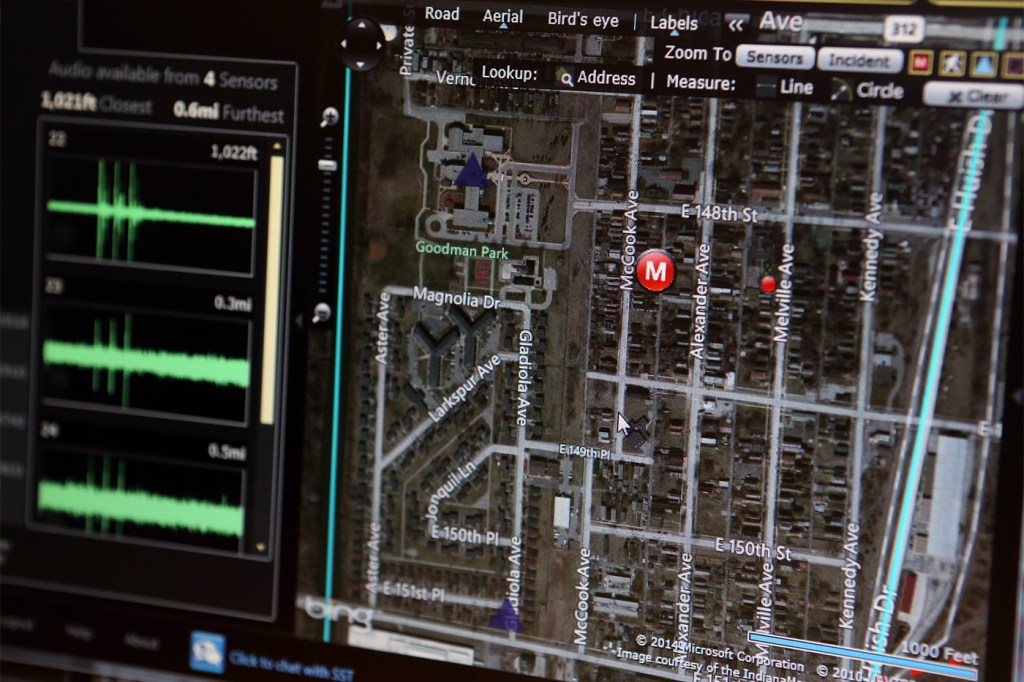
Recent Stories


Cyber Command, DARPA Sign Agreement to Expedite Cyber Tech Development

The U.S. Cyber Command and the Defense Advanced Research Projects Agency have signed a binding agreement to create an expedited pathway to advance research and development of cyber technologies for military applications.
The agreement establishes the joint governance structure, budget goals and roles and responsibilities of the organizations’ Constellation program to expedite the deployment of cyber technologies from the laboratory to the battlefield, DARPA said Tuesday.
Under the partnership, Cyber Command will select DARPA research and development projects to be carried out by the Orion Consortium, which comprises developers and performers from both organizations working collaboratively to deliver new cyber capabilities.
“Through Constellation, we are taking the most promising technology from across the DARPA portfolio and developing critical capabilities under focused projects to accelerate direct delivery capability to the warfighter,” said Lt. Gen. William Hartman , deputy commander of Cyber Command.
The Constellation pilot program was established in October 2022 under a memorandum of understanding between DARPA and Cyber Command to expedite the development and transition of cyber-related technologies to the command.

« RETURN TO NEWS
N.C. A&T Nanoengineering Professor Receives NCInnovation Grant for Drug Delivery Research
By Jamie Crockett / 05/21/2024 Research and Economic Development , Joint School of Nanoscience and Nanoengineering
- 4-H and Youth Development News
- Academic Affairs News
- Accounting and Finance News
- Administration and Instructional Services News
- Admissions News
- Agribusiness, Applied Economics and Agriscience Education News
- Agricultural and Natural Resources News
- Alumni News
- Animal Sciences News
- Applied Engineering Technology News
- Athletics News
- Biology News
- Built Environment News
- Business and Finance News
- Business Education News
- Chancellor's Speaker Series
- Chancellors Town Hall Series
- Chemical, Biological, and Bio Engineering News
- Chemistry News
- Civil, Architectural and Environmental Engineering News
- College News
- Community and Rural Development News
- Computational Science and Engineering News
- Computer Science News
- Computer Systems Technology News
- Cooperative Extension News
- Counseling News
- Criminal Justice News
- Deese College News
- Economics News
- Educator Preparation News
- Electrical and Computer Engineering News
- Employees News
- Energy and Environmental Systems News
- English Department News
- Family and Consumer Sciences News
- Graphic Design Technology News
- Hairston College News
- Headlines News
- History & Political Science News
- Honors College News
- Human Resources News
- Industrial and Systems Engineering News
- Information Technology Services News
- Innovation Station News
- Journalism & Mass Communication
- Kinesiology News
- Leadership Studies and Adult Education News
- Liberal Studies News
- Library News
- Magazine News
- Management News
- Marketing News
- Mathematics News
- Mechanical Engineering News
- Media Spotlight News
- Natural Resources and Environmental Design News
- News Categories
- Nursing News
- Psychology News
- Research and Economic Development News
- Social Work News
- Student Affairs News
- Students News
- The Graduate College News
- Transportation & Supply Chain
- University Advancement News
- Visual & Performing Arts News

EAST GREENSBORO, N.C. (May 21, 2024) – Researchers at the Joint School of Nanoscience and Nanoengineering (JSNN), led by Kristen Dellinger, Ph.D., are making significant strides in the treatment of neurodegenerative diseases. Their groundbreaking research has received a grant of $369,024 over two years from NCInnovation as part of its inaugural round of research funding, which totaled $5.2 million across eight projects.
A key focus of the North Carolina Agricultural and Technical State University team's research is the blood-brain barrier (BBB), a significant challenge in treating neurological conditions such as Alzheimer’s disease (AD) and Parkinson’s disease, as it hinders many drugs and small molecules from reaching the brain. By harnessing the potential of small extracellular vesicles, which have shown promising ability to cross the BBB, the team aims to revolutionize therapeutic delivery to the brain.
“The BBB has always been a hurdle in effective drug delivery to the brain, requiring higher drug doses that can lead to negative side effects. To overcome this, we're leveraging extracellular vesicles, which are tiny lipid packages, as carriers to enhance drug delivery across the BBB,” said Dellinger, an assistant professor of nanoengineering. “This NCInnovation project will focus on effective ways of isolating and engineering these tiny packages to improve the commercial viability and translation of this approach.”
The project's co-principal investigator, Jeffrey Alston, Ph.D., an associate professor of nanoengineering, brings experience in nanotextured surfaces and interfaces, including the design of biopolymer surfaces infused with liquids, the formation of nanoparticles in emulsion systems, and the study of low-density, high-temperature stable nanomaterials. His expertise will play a crucial role in the materials development and engineering of the project's extracellular vesicle isolation and yield.
“Scientific discovery and the pursuit of solutions that advance the human condition are critically important to North Carolina A&T’s mission as a high-impact research university,” said Chancellor Harold L. Martin Sr. “We thank the General Assembly and NCInnovation for supporting Dr. Dellinger’s work, as well as the university applied research that fuels innovation across our state.”
Dellinger joined JSNN in 2019, bringing expertise in synthetic biology, biomedical and chemical engineering. She received a B.Sc. and M.Sc. in chemical engineering from Queen’s University in Kingston, Canada, and a Ph.D. in biomedical engineering from McGill University in Montreal, Canada.
Dellinger leads the NanoBio Innovation (NBI) Laboratory at JSNN, which focuses on exploring extracellular vesicles for disease treatment and diagnosis, designing and evaluating biosensors for early disease detection, and engineering functionalized nanoparticles and 2D platforms for integrated optical sensors in biomedical and environmental applications.
Dellinger recently co-authored the article “Unlocking the potential of circulating small extracellular vesicles in neurodegenerative disease through targeted biomarkers and advancements in biosensing,” which was published in the Exploration of BioMat-X Journal in April. The article explores how small extracellular vesicles can be used as “potential sources of markers for screening, diagnosing and monitoring neurodegenerative diseases” like AD and Parkinson’s.
Dellinger’s project is one of eight NCInnovation selected for funding. Others are led by research teams at the University of North Carolina-Greensboro, East Carolina University, University of North Carolina at Charlotte, University of North Carolina-Wilmington, Western Carolina University and Appalachian State University. According to NCInnovation, “the grants will support applied research that has already achieved proof of concept.”
-Kristen Dellinger, Ph.D., contributed to this report
Media Contact Information: [email protected]
Latest News

Endowed Biology Professor Graves Named 2024 Genius Award Honoree
05/24/2024 in College of Science and Technology , Biology

UNC System Honors Fashion Professor Dixon with Teaching Excellence Award
05/23/2024 in College of Agriculture and Environmental Sciences , Family and Consumer Sciences

N.C. A&T Hosted Technology Day Ahead of N.C. Transportation Summit
05/22/2024 in College of Engineering
Student airplane accessibility project named finalist for international award
- Lindsey Byars
20 May 2024
- Share on Facebook
- Share on Twitter
- Copy address link to clipboard

Susan Sale and Mikayla Kaczmar, recent Virginia Tech industrial design graduates from the College of Architecture, Arts, and Design , will travel to Hamburg, Germany, this week to represent their team from the Calhoun Honors Discovery Program and the United States in the university division of Hamburg Aviation’s Crystal Cabin Awards .
The award recognizes exceptional aircraft cabin products and concepts that elevate the passenger’s experience. For passengers who use a wheelchair, Virginia Tech’s project could be life changing.
Chairs in the Air is a collaboration between Virginia Tech’s student team, Boeing, All Wheels Up , and Collins Aerospace. The team’s Wheelchair Space and Securement System concept would allow passengers with limited mobility to sit securely in their own wheelchairs during flight, reducing the risk of injury and protecting their chairs from damage during stowing.
“Our design is pretty simple,” said Kaczmar. “It’s a retrofittable pallet design you put right into an aircraft that involves three economy class chairs. All three chairs fold up, you can wheel the chair into a built-in securement system that locks the wheelchair into place, and the outside chair can fold back down to allow for a passenger or mobility helper to sit.”
“The general concept of the design is that a wheelchair user can remain in their personal wheelchair for the duration of their flight — from booking to boarding to beyond,” said Sale.

Keeping a wheelchair with its passenger protects both the person and the essential device. Wheelchairs are costly to fix, and if damage is extensive or the stowed chair is sent to the wrong location, the person will not be mobile when they reach the destination.
For travelers with neuromuscular diseases, being separated from their chairs for extended time can be life threatening. Sale recalls two wheelchair-on-airplane deaths when team members started their project. Existing airplane seats don’t include the harnesses and other safey gear that may be essential for passengers who use wheelchairs, so another traveler must be there to hold the passenger’s body up during take-off, turbulence, and landing.
“This is a really big issue for wheelchair users that they have to be separated from their chairs when they fly,” said Sale. “It’s dangerous and painful, not to mention undignified for them to be moved around the aircraft. It’s not how we should be treating people.”
Kaczmar and Sale pioneered this project for the past two years, conducting research with industry partners and listening to stories from many wheelchair users. However, the idea for a team to address airplane accessibility came from Juliana Iacono during her first year at Virginia Tech.
Iacono’s family, who are avid travelers, have been flying with her wheelchair-dependent brother for many years. As he got older, navigating airplanes became more difficult. Based on these experiences, Iacono developed a passon for accessible air travel. She presented the problem with aircraft accessibility to a cohort of students to see if others would be interested in forming a team. Shortly after, Chairs in the Air came to fruition.
“I gave them a lot of insight in meetings that influenced design ideas, helping them also think about the person who is traveling with the person in a chair and what the full experience is on the plane from beginning to end,” said Iacono.
Now in her third year as an industrial design major and a member of the Chairs in the Air team, Iacono is thrilled to see the project come full circle.
“As product designers, it’s rewarding to be able to help create products and make changes that hopefully make the world a better place and make people’s lives easier,” said Iacono.

Ellen Braaten , assistant professor emerita in the School of Architecture , has worked closely with team members for the past two years, using her electric wheelchair to test out prototypes team members created and to help them understand how difficult air travel is in a chair. For Braaten, airlines implementing this system would mean she could fly for the first time in decades.
“I am a polio survivor from 1947. I walked on crutches for 50 years, flew all over the world, and when I had to get into a wheelchair, that was no longer a possibility,” said Braaten, who added that air travel with a wheelchair became a demeaning process that involved being carried in on a gurney and dropped into a seat.
“These kids were so involved and so understanding,” said Braaten. “We could talk about the issues that I’m confronted with, and in the long run, it’s going to be good for everyone by allowing people to have the freedom that they need.”
Braaten is proud of the team’s accomplishments and adds that their recognition as a finalist in the Crystal Cabin Award makes her feel hope that one day she’ll be able to fly again, allowing her to visit her daughter more often.
On May 28, the winners will be announced in Hamburg, Germany. Supported by funding from the Virginia Tech Honors College and the School of Design, Sale and Kaczmar will be in attendance to present their project. They hope industry experts attending the event will be inspired to help make air travel more accessible.
The U.S. Department of Transportation announced a new rule in 2023 requiring airlines to make lavatories on new single-aisle aircraft large enough to permit a passenger with a disability and attendant. Both Sale and Kaczmar see potential for the legislature to continue working toward better accessibility.
“On the issue of improving accessibility on aircraft there’s still work to be done for it to be a legislative requirement, so I think it’s good for people to keep this in mind in the future,” said Sale. “This is an issue that they can influence with their vote.”
Zeke Barlow
540-231-5417
- Accessibility
- College of Architecture, Arts, and Design
- Emeritus and Emerita Faculty
- Honors College
- Industrial Design
- School of Architecture
Related Content


IMAGES
VIDEO
COMMENTS
Artificial intelligence technology research topics. We started 2023 with M3GAN's box office success, and now we're fascinated (or horrified) with ChatGPT, voice cloning, and deepfakes. While people have discussed artificial intelligence for ages, recent advances have really pushed this topic to the front of our minds.
5 Medical Devices & Diagnostics. 6 Pharmaceutical Technology Research Topics. 7 Food Technology Research Topic. 8 Educational Technology Research Topic. 9 Controversial Technology Research Topics. 10 Transportation Technology Research Topics. 11 Information Communication Technologies (ITC) Research Topics. 11.1 Conclusion.
The year's popular research stories include a promising new approach to cancer immunotherapy, the confirmation of a 50-year-old theorem, and a major fusion breakthrough. In 2021, MIT researchers made advances toward fusion energy, confirmed Stephen Hawking's black hole theorem, developed a Covid-detecting face mask, and created a ...
Projects. Our teams leverage research developments across domains to build tools and technology that impact billions of people. Sharing our learnings and tools to fuel progress in the field is core to our approach. Google is driving innovation in brain mapping, enabling breakthroughs in neuroscience. VideoPoet is a language model capable of ...
Founded at the Massachusetts Institute of Technology in 1899, MIT Technology Review is a world-renowned, independent media company whose insight, analysis, reviews, interviews and live events ...
Relationships and Media. 7. War. 8. Information and Communication Tech. 9. Computer Science and Robotics. Researching technology can involve looking at how it solves problems, creates new problems, and how interaction with technology has changed humankind.
GTRI Project Portfolio GTRI researchers focus on issues ranging from sensors and information to systems and technology for society. Explore the four pillars. ... Gregory Louden, Principal Research Engineer in the Georgia Tech Research Institute's Advanced Concepts Laboratory (ACL), and head of its Advanced Warfighting Technologies Division, was ...
Research. Download RSS feed: News Articles / In the Media / Audio. Displaying 1 - 15 of 5593 news articles related to this topic. Show: News Articles. In the Media. Audio. Robotic palm mimics human touch ... setting the stage for improvements in human-robot interaction and prosthetic technology.
Tech tools to make research more open and inclusive. Laboratory heads are deploying apps and software in innovative ways to build broad and diverse research groups. By. Kendall Powell ...
Advancing the state of the art. Our teams advance the state of the art through research, systems engineering, and collaboration across Google. We publish hundreds of research papers each year across a wide range of domains, sharing our latest developments in order to collaboratively progress computing and science. Learn more about our philosophy.
Mineral, a project that was completed in 2020, brings together plant breeders and growers across Argentina, Canada, the United States and South Africa to test new models for sustainable farming using AI and machine learning. At Mineral's core is an electric-powered rover that collects granular data about soil health and crop development.
Research. Caltech is small but prizes excellence and ambition. The Institute's extraordinary faculty, students, postdoctoral scholars, and staff are expanding our understanding of the universe, shifting paradigms, launching new fields, and inventing the technologies of the future. They are producing transformative breakthroughs in fields ...
Our mission is to simplify the research process for both parties. By efficiently connecting researchers and participants, we facilitate rapid data collection and ensure an enriching experience for participants. We're about making research easy and beneficial for all. ★★★★★ Trusted by 100,000+ participants.
At Georgia Tech, computing is taken seriously. Founded in 1990, the College of Computing represented just the second computing college at top U.S. universities, and its commitment to that continues to this day. Our five schools and some 140 faculty allow us to explore a wide range of research areas ...
Technology News. Read the latest technology news on SciTechDaily, your comprehensive source for the latest breakthroughs, trends, and innovations shaping the world of technology. We bring you up-to-date insights on a wide array of topics, from cutting-edge advancements in artificial intelligence and robotics to the latest in green technologies ...
As an R1, top research university, Georgia Tech is shaping the future of basic and applied research by pursuing inventive solutions to the world's most pressing problems. Our exceptional community of academic faculty, researchers, staff, and students innovate at the intersection of disciplines to further new frontiers in science and ...
Research. At MIT, pushing the boundaries of knowledge and possibility is our joyful obsession, and we celebrate fundamental discoveries and practical applications alike. As educators, we also value research as a potent form of learning by doing. Research flourishes in our 30 departments across five schools and one college, as well as in dozens ...
Research is taking place all across Michigan Tech. Below, you will find a sample listing of some of our publicly funded research projects. Use our search box or advanced filtering options to search our research projects by keyword, by department, or even by investigator.
Campus and Community. Research Research School of Global Public Health Tandon School of Engineering College of Arts and Science Arts and Science Liberal Studies Gallatin School of Individualized Study Leonard N. Stern School of Business NYU Abu Dhabi. The telegraph. The polio vaccine. The bar code. Light beer.
AUSTIN, Texas — Research that will use artificial intelligence to boost the performance and energy efficiency of computer operating systems will be led by a team from The University of Texas at Austin, thanks to a major grant from the U.S. National Science Foundation's Expeditions in Computing program.. Today's operating systems pose a significant barrier to a number of promised exciting ...
Welcome to Georgia Tech Research Projects. This site is designed to provide a centralized location for all projects inside of the Georgia Tech community related to the Covid-19 response. This site allows users to filter and sort through the database and glean pertinent information about projects of interest. If perhaps you are looking to ...
The research highlights the importance of staying ahead of the curve in technology. Companies that embrace digital technologies now are likely to be the ones that thrive in the future. And while there are still many unanswered questions about how these changes will play out, one thing is clear: The relationship between technology and business ...
MIT postdocs Marin Vogelsang and Lukas Vogelsang, and Project Prakash research scientist Priti Gupta, are the lead authors of the study, which appears today in Science. Sidney Diamond, a retired neurologist who is now an MIT research affiliate, and additional members of the Project Prakash team are also authors of the paper. Seeing in black and ...
GigAction is an AI assistant that guides workers to implement the solutions. The AI tools help reinforce gig workers' collective identity, potentially inspiring them to undertake actions that benefit them as a whole, Savage says. As part of her research, Savage conducted interviews and collaborative design sessions with gig workers from ...
Today, Elemash is one of the largest TVEL nuclear fuel production companies in Russia, specializing in fuel assemblies for nuclear power plants, research reactors, and naval nuclear reactors. Its fuel assemblies for RBMK, VVER, and fast reactors are used in 67 reactors worldwide. 2 It also produced MOX fuel assemblies for the BN-800 and the ...
The U.S. Cyber Command and the Defense Advanced Research Projects Agency have signed a binding agreement to create an expedited pathway to advance research and development of cyber technologies ...
In what follows, we will measure the magnetic eld strength in units of Bc (1) and take the electron mass m, the Compton wavelength of the electron = ~=mc 3:86 10 11 cm, and its ratio to the speed of light =c 1:29 10 21 s as the units of mass, length, and time, respectively. Formally, this means that ~ = = c = 1.
Researchers at the Joint School of Nanoscience and Nanoengineering (JSNN), led by Kristen Dellinger, Ph.D., are making significant strides in the treatment of neurodegenerative diseases. Their groundbreaking research has received a grant of $369,024 over two years from NCInnovation as part of its inaugural round of research funding, which totaled $5.2 million across eight projects.
The award recognizes exceptional aircraft cabin products and concepts that elevate the passenger's experience. For passengers who use a wheelchair, Virginia Tech's project could be life changing. Chairs in the Air is a collaboration between Virginia Tech's student team, Boeing, All Wheels Up, and Collins Aerospace. The team's Wheelchair ...
In 1938, it was granted town status. [citation needed]Administrative and municipal status. Within the framework of administrative divisions, it is incorporated as Elektrostal City Under Oblast Jurisdiction—an administrative unit with the status equal to that of the districts. As a municipal division, Elektrostal City Under Oblast Jurisdiction is incorporated as Elektrostal Urban Okrug.